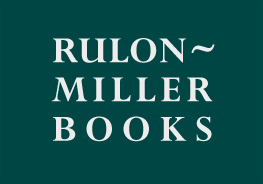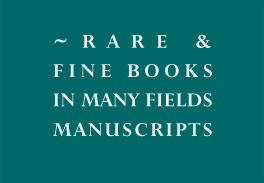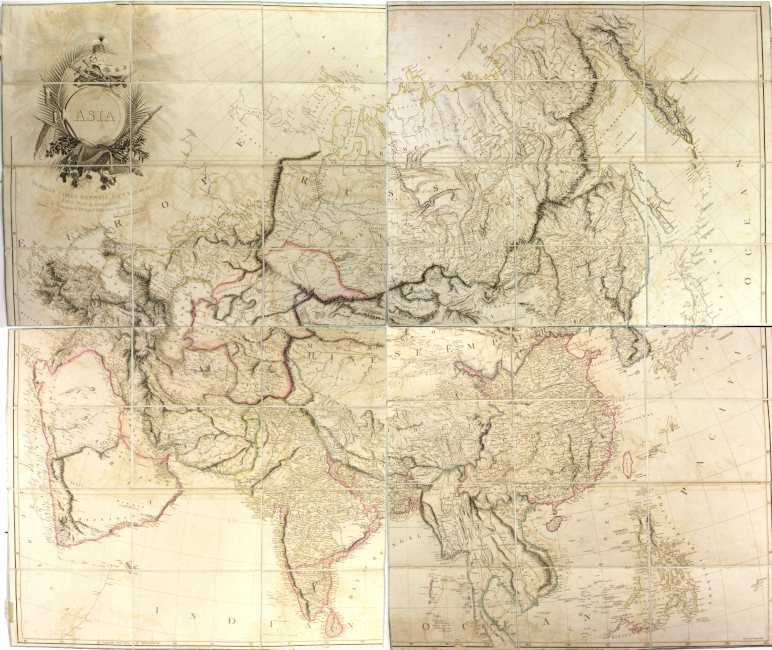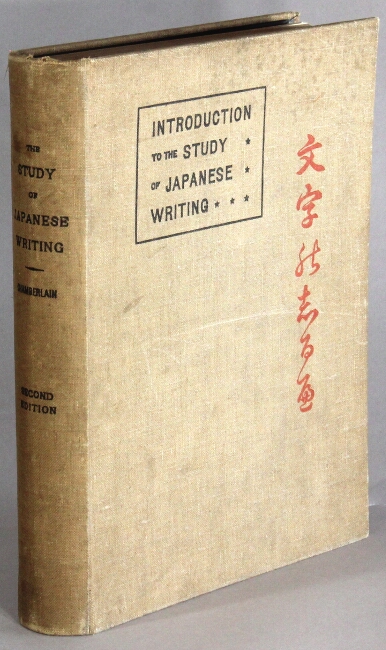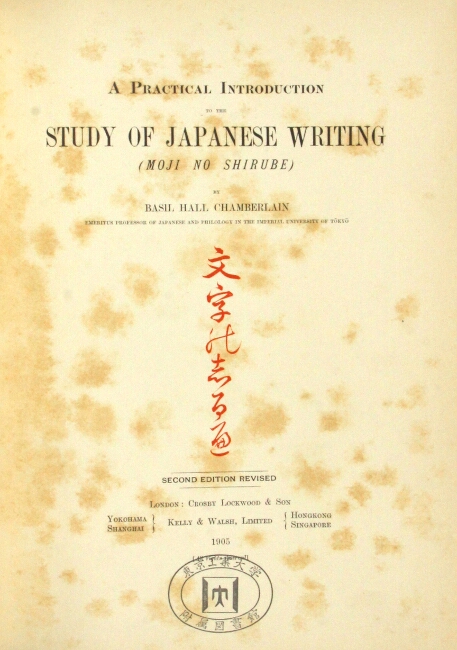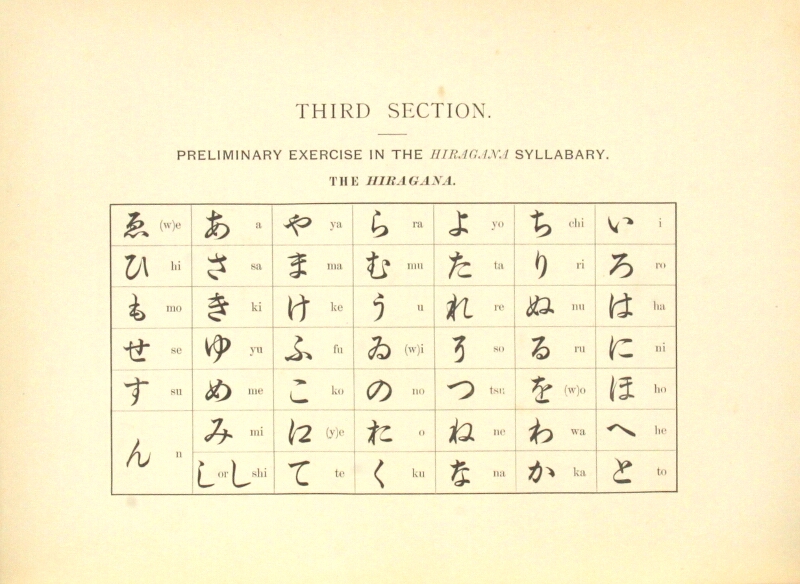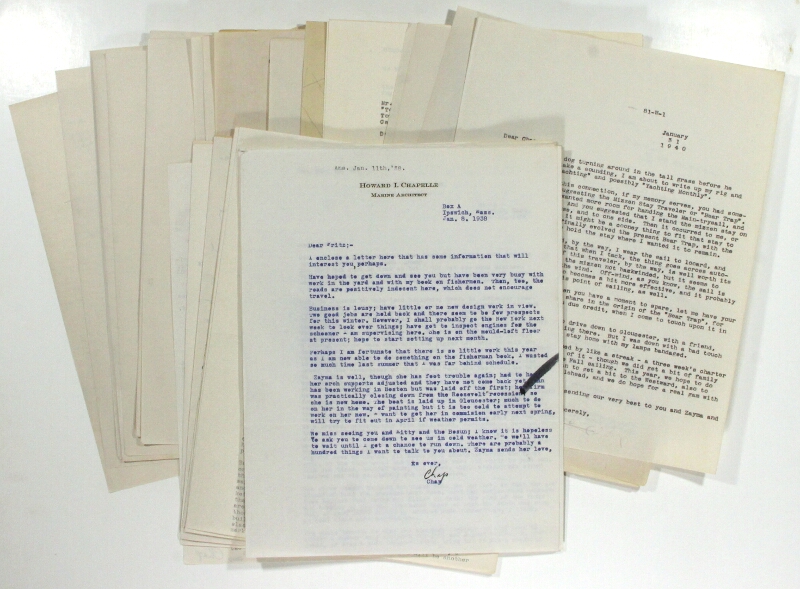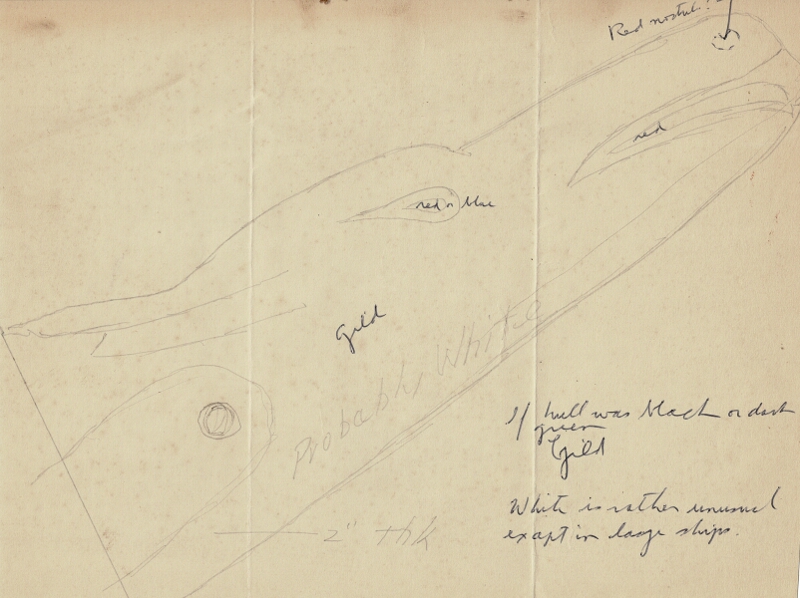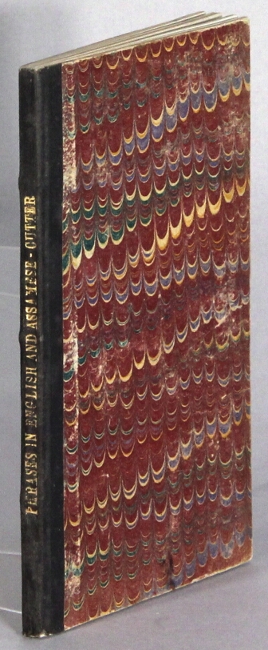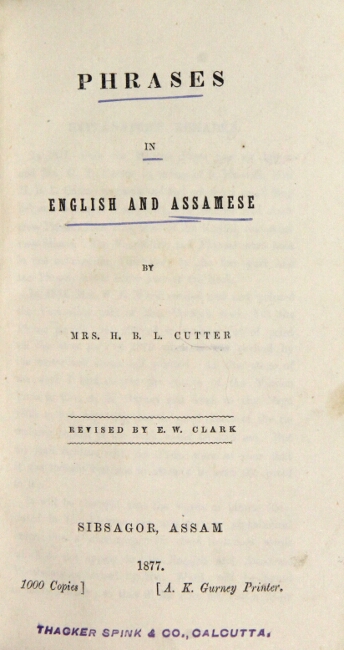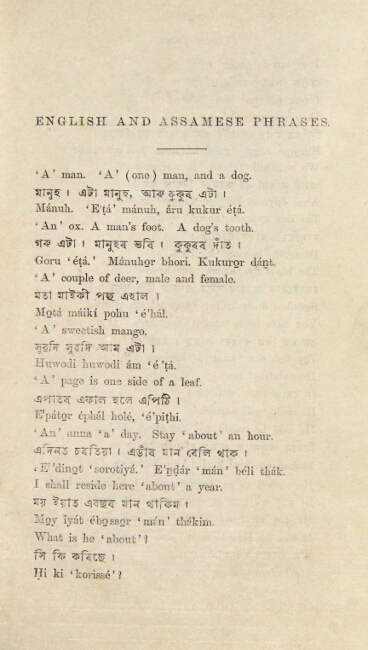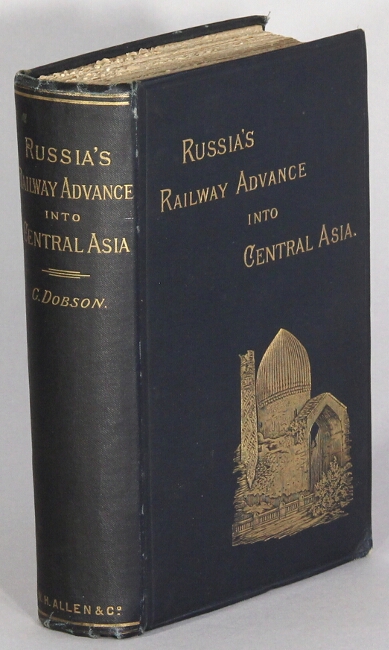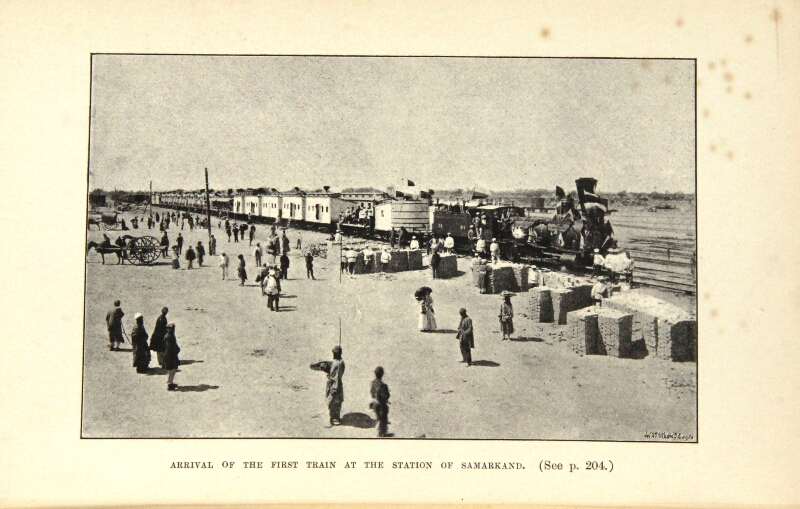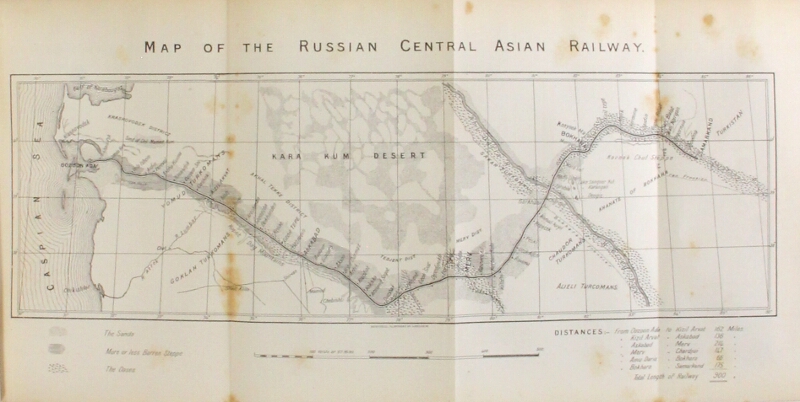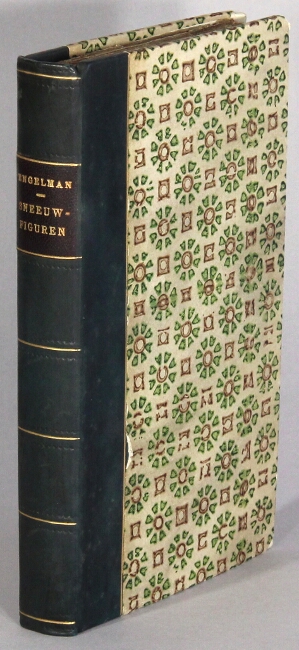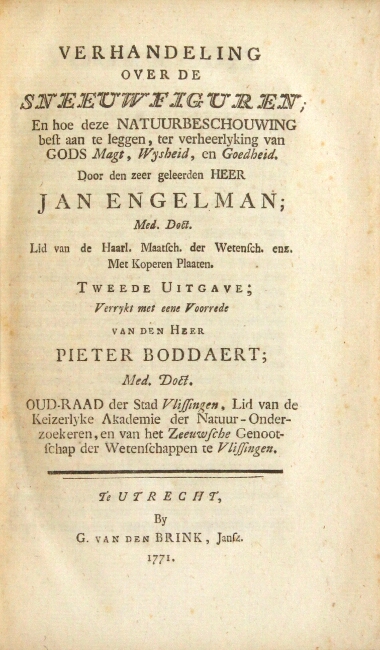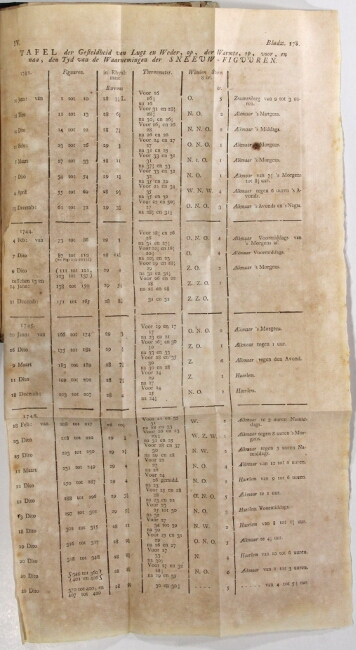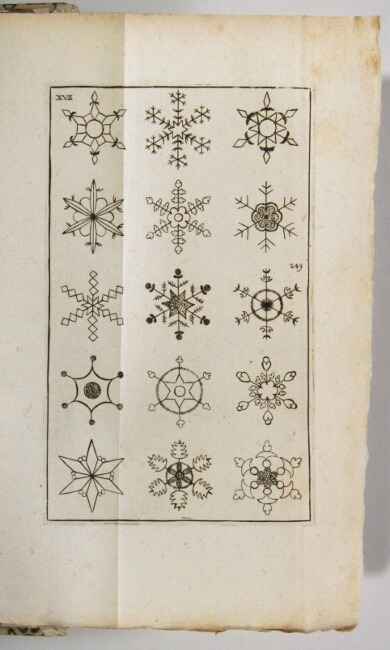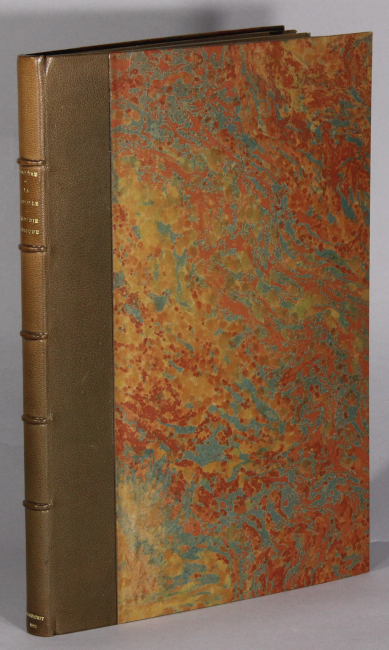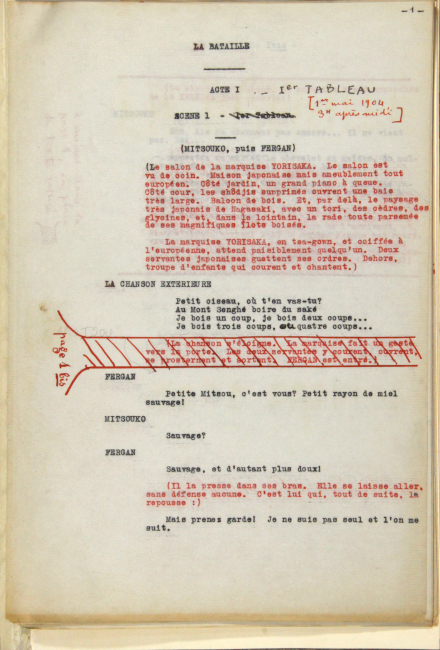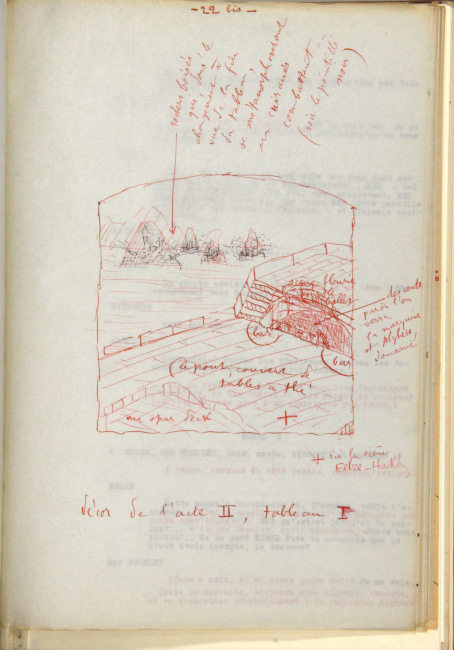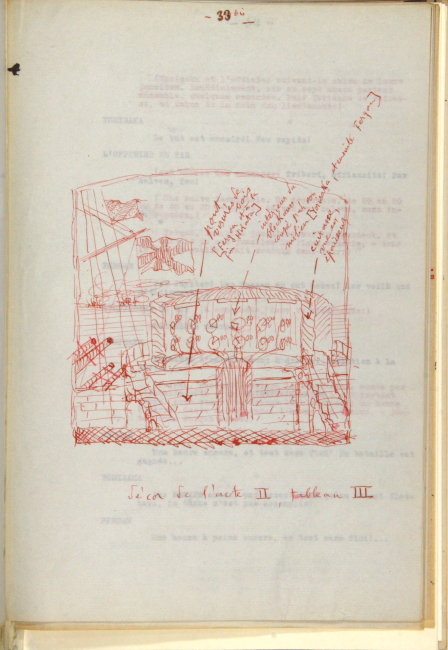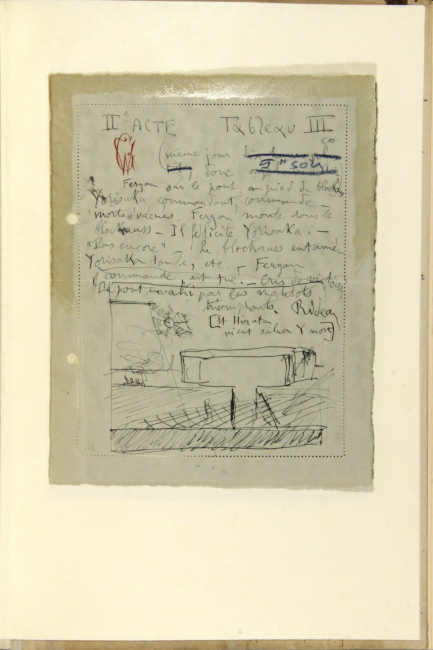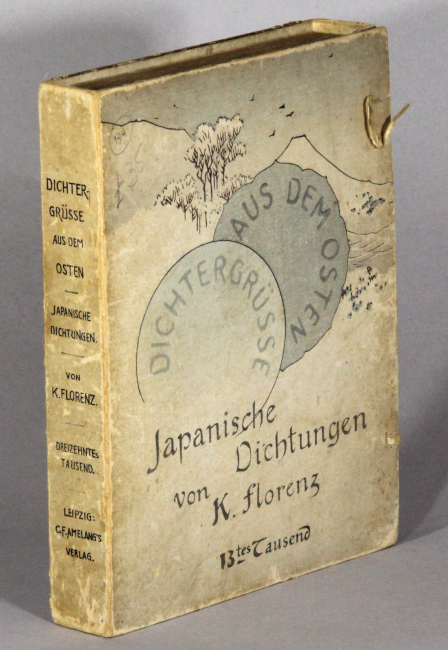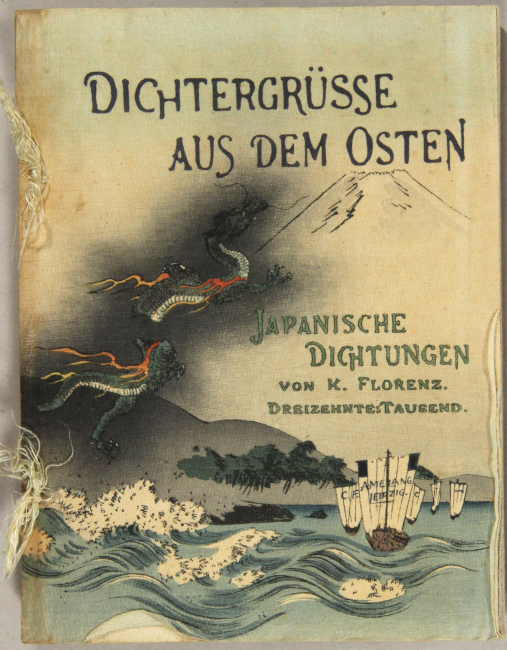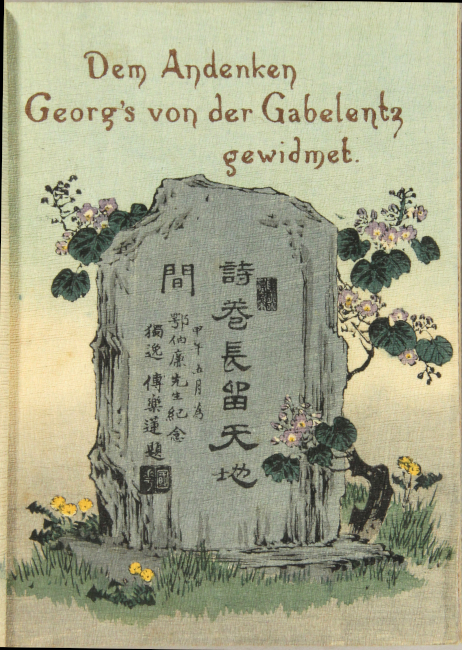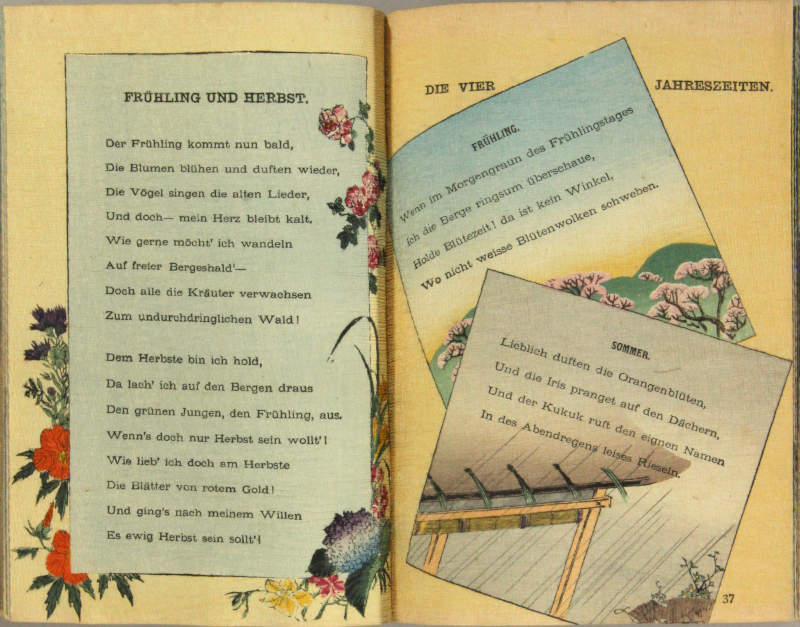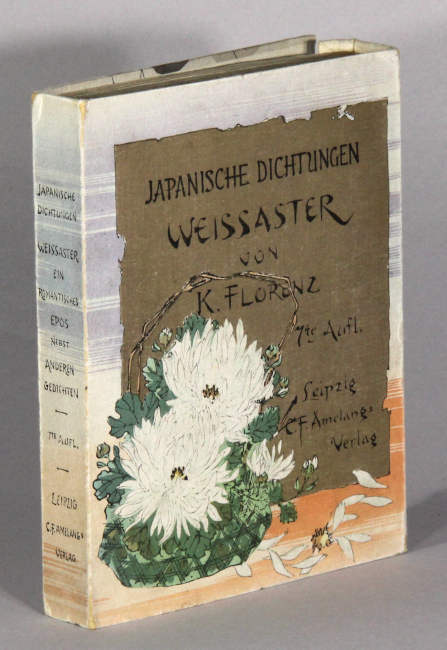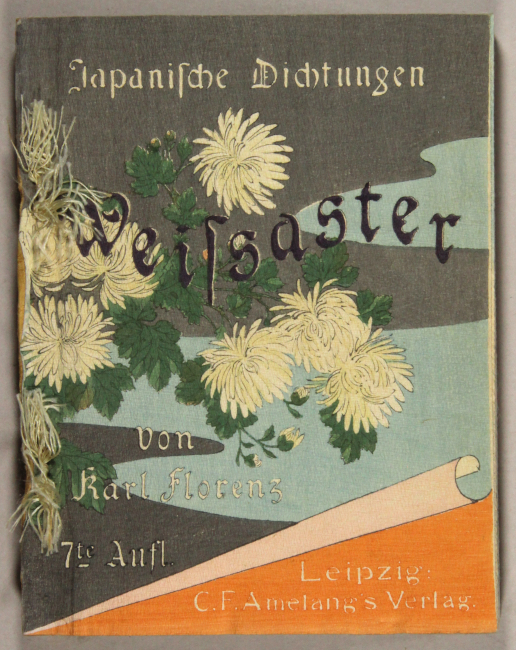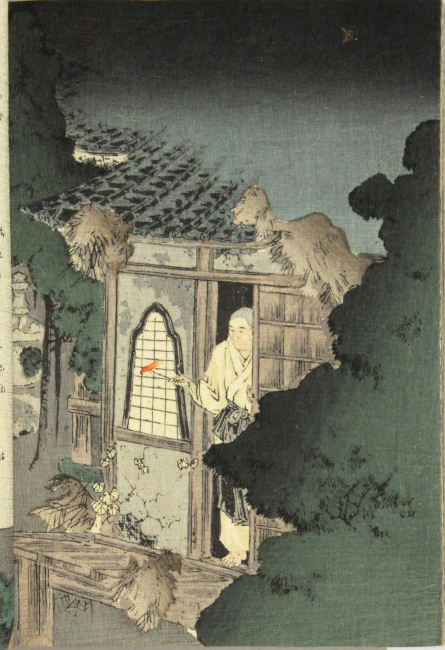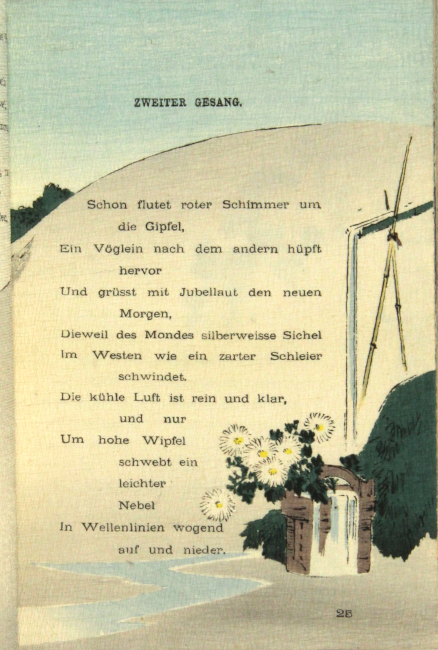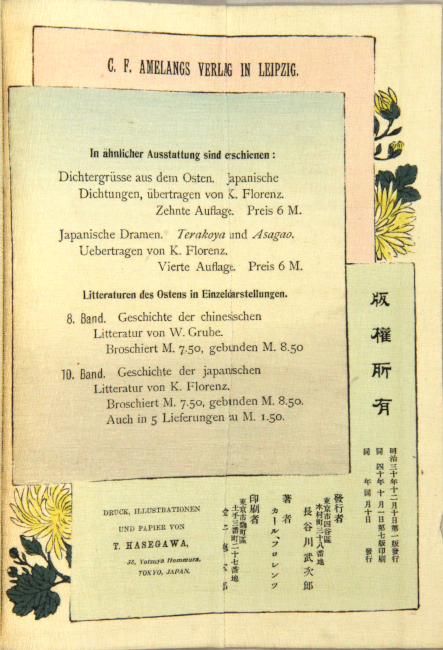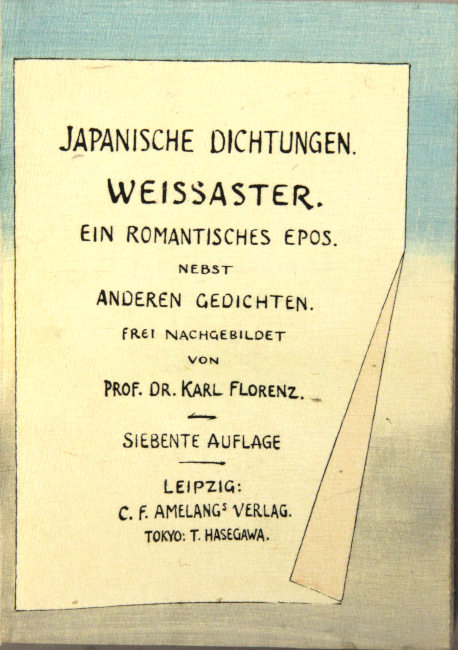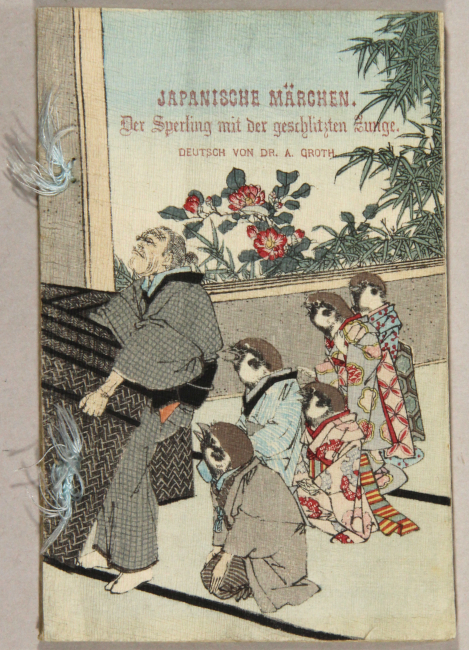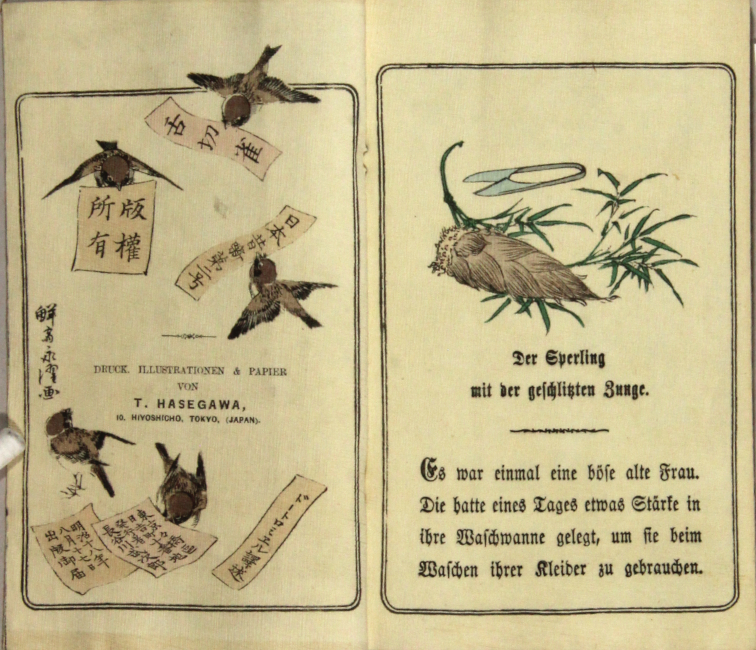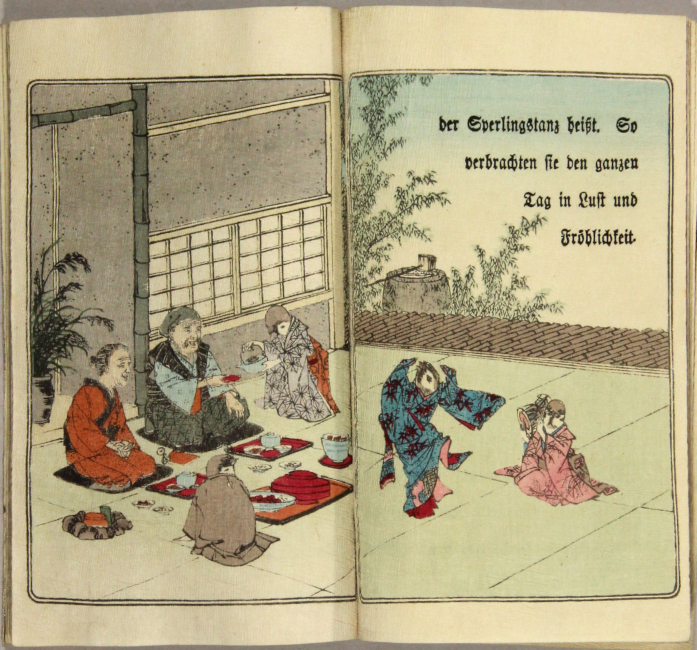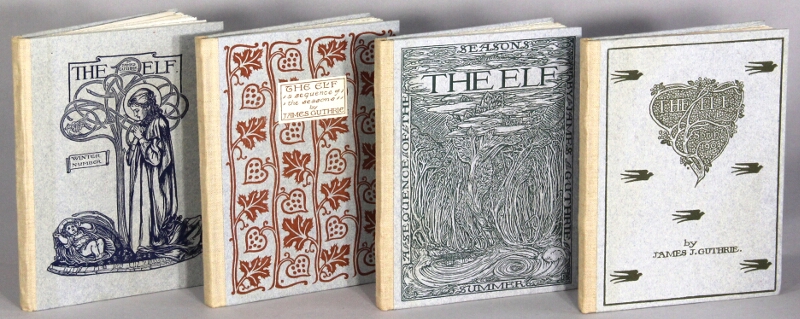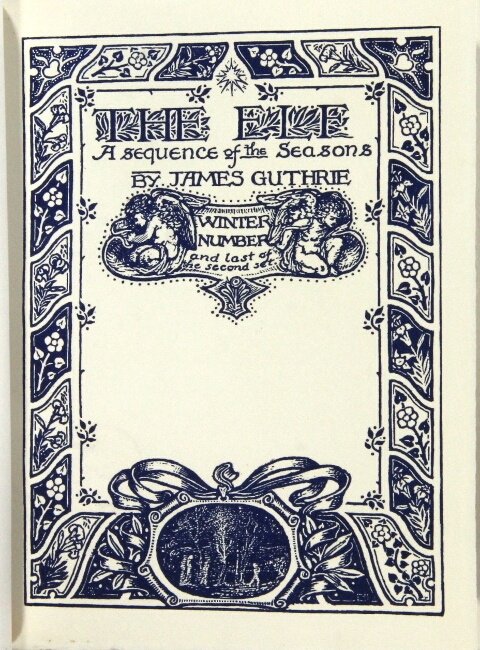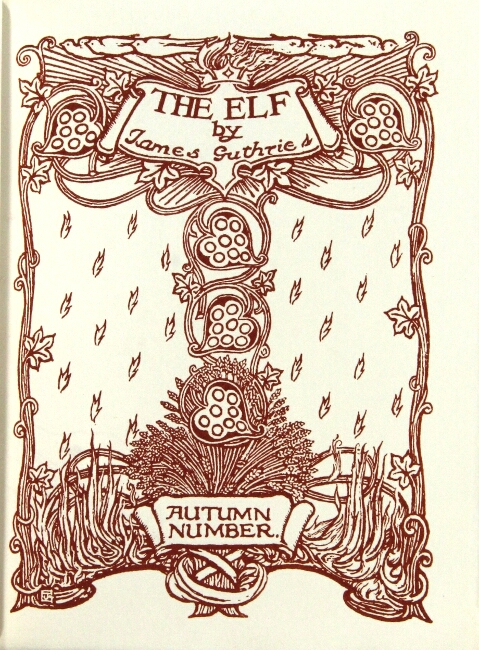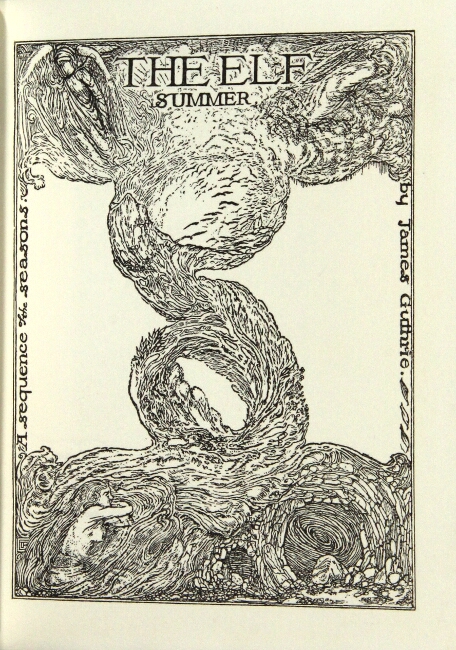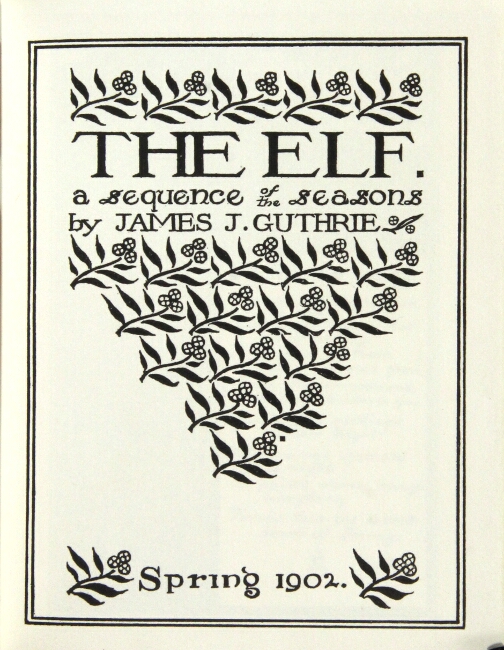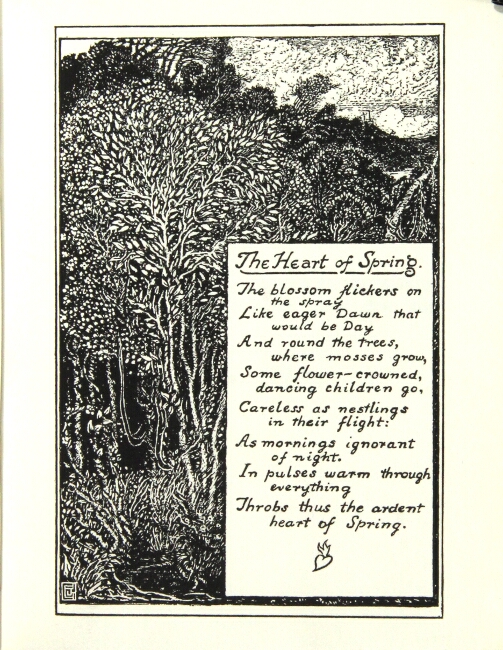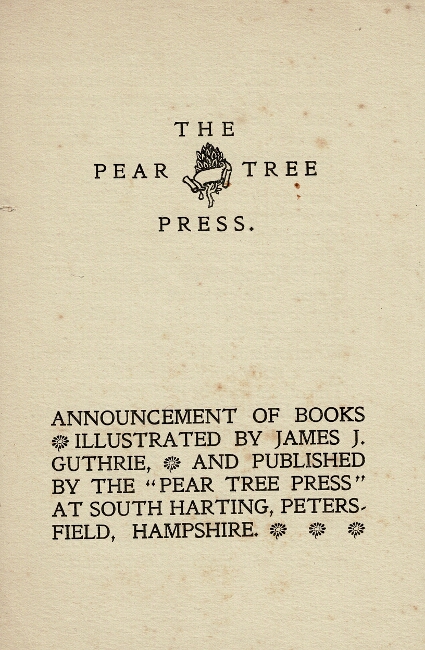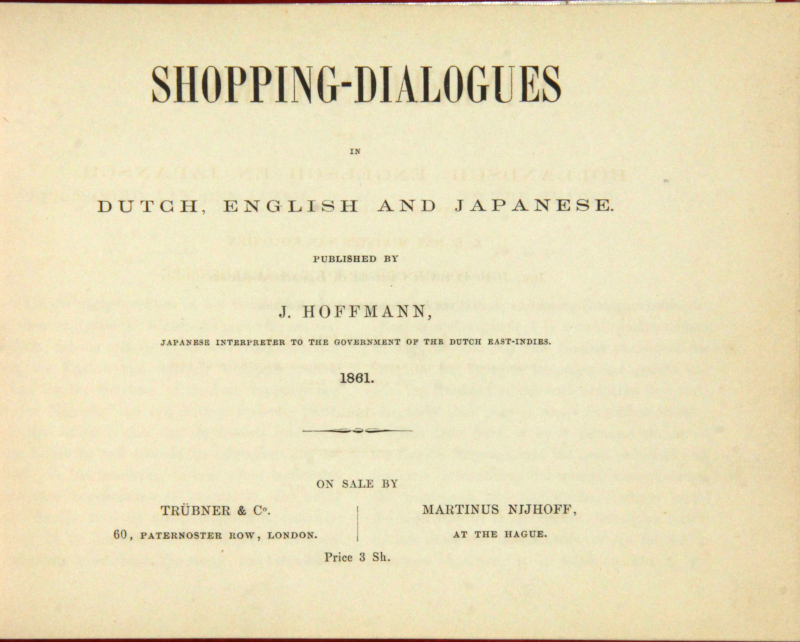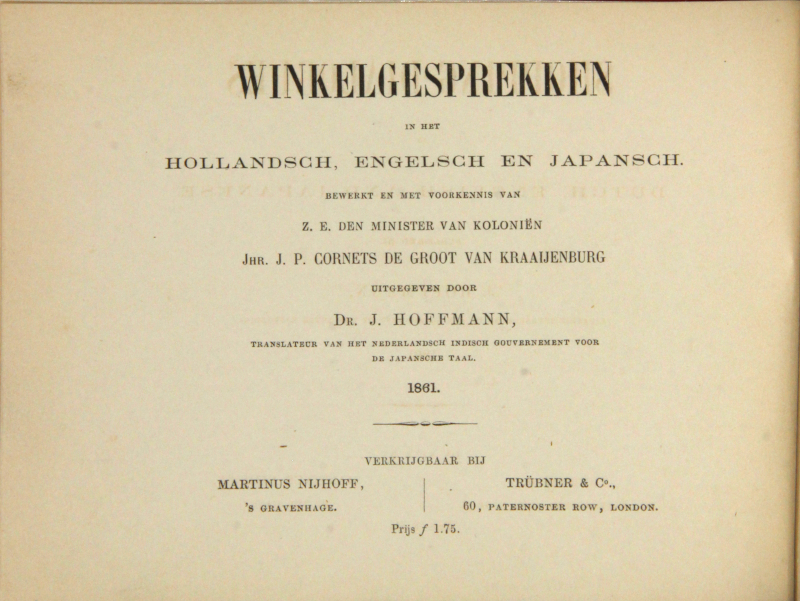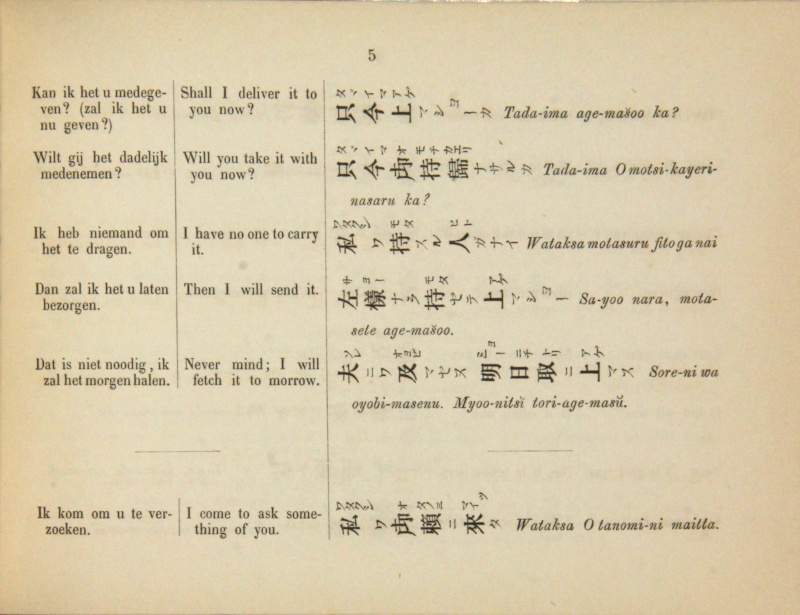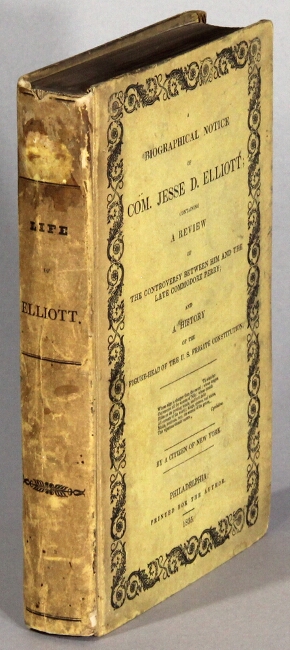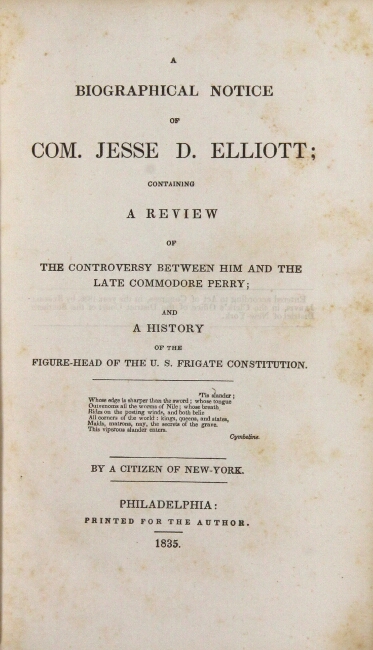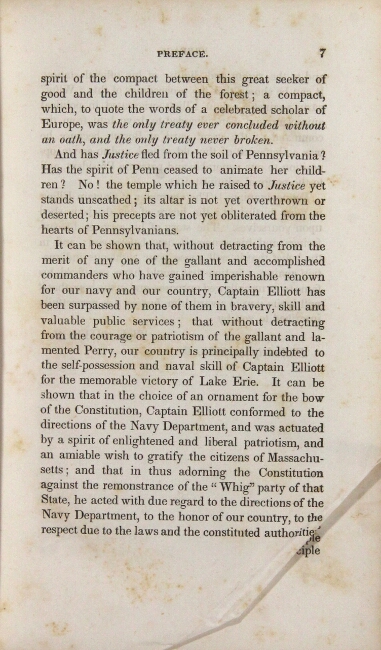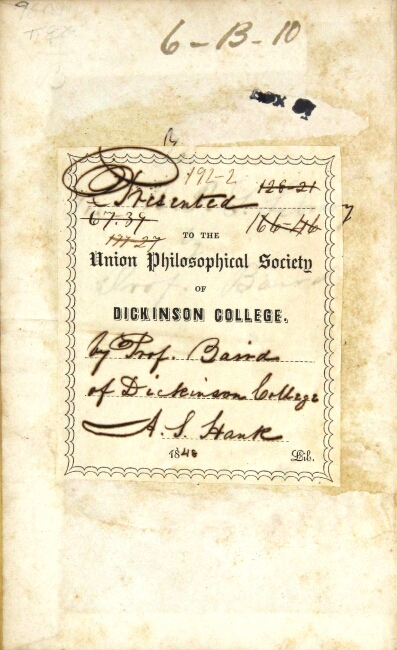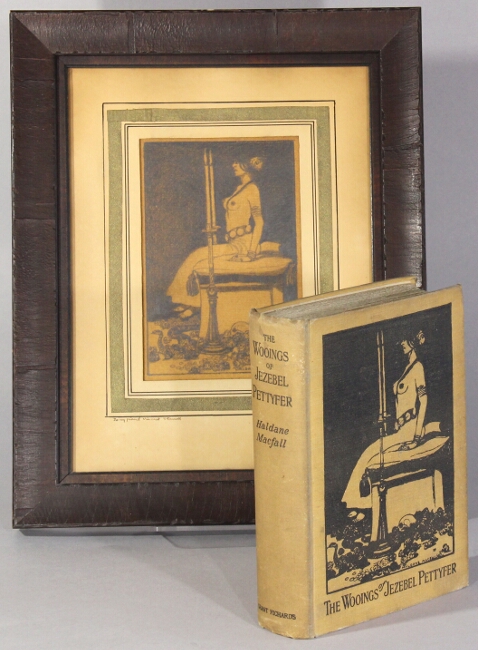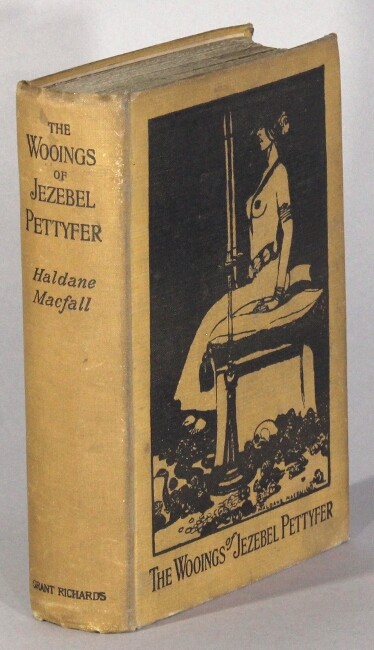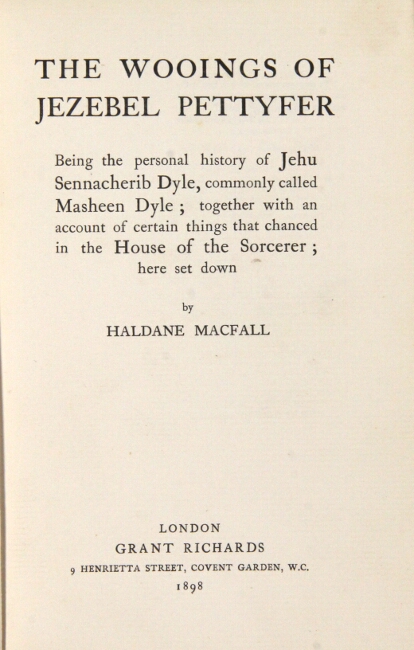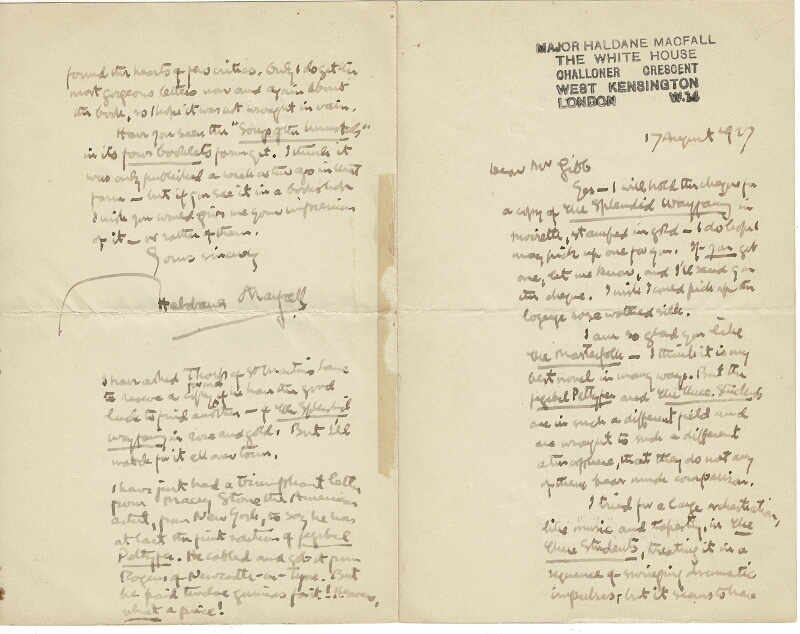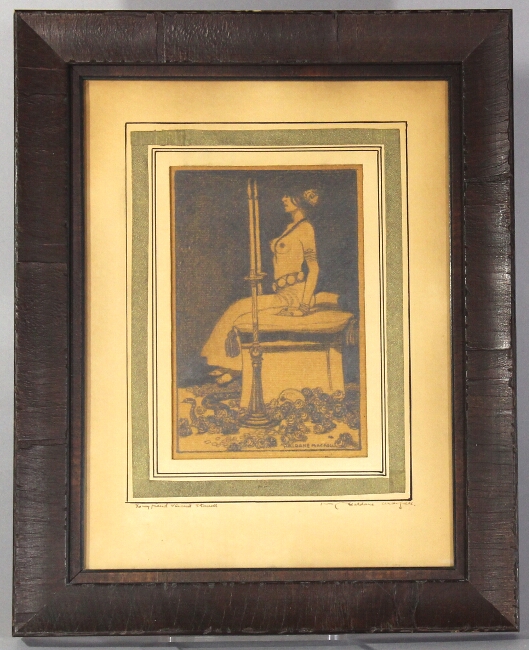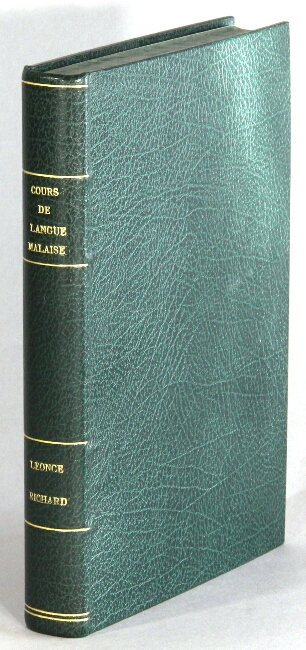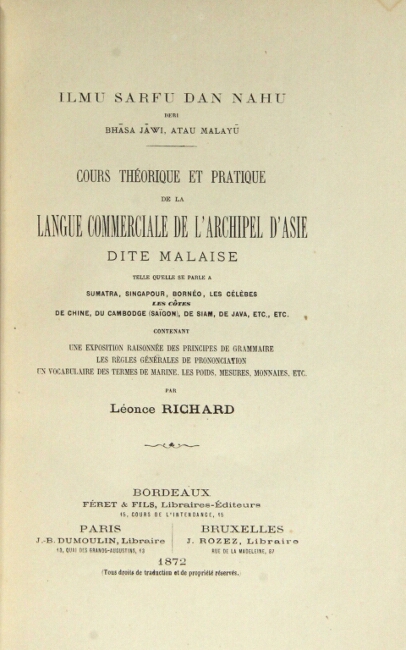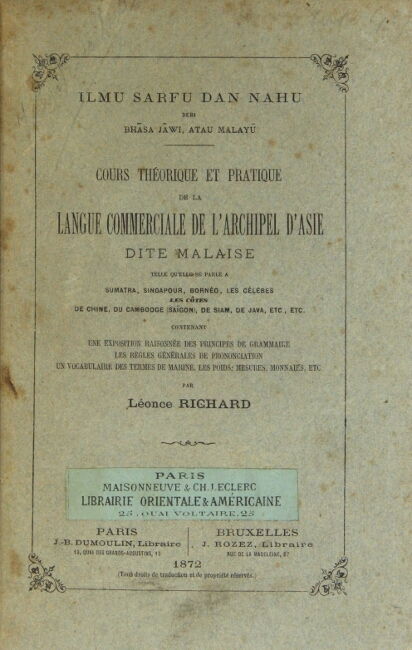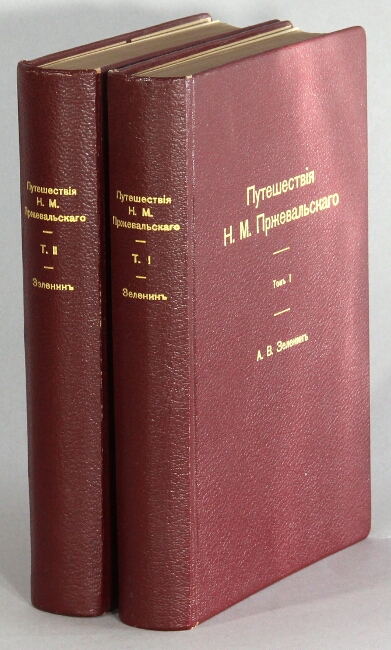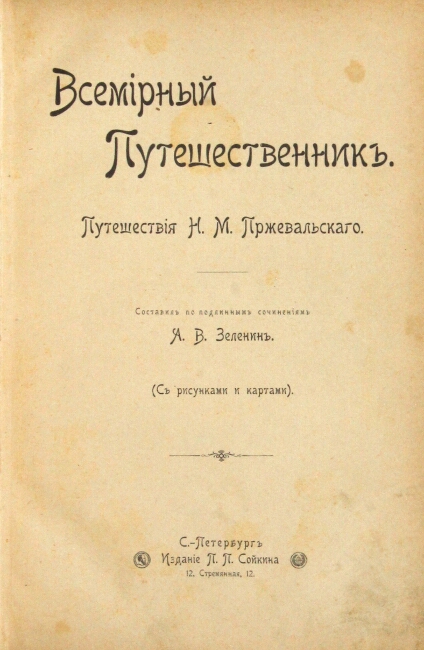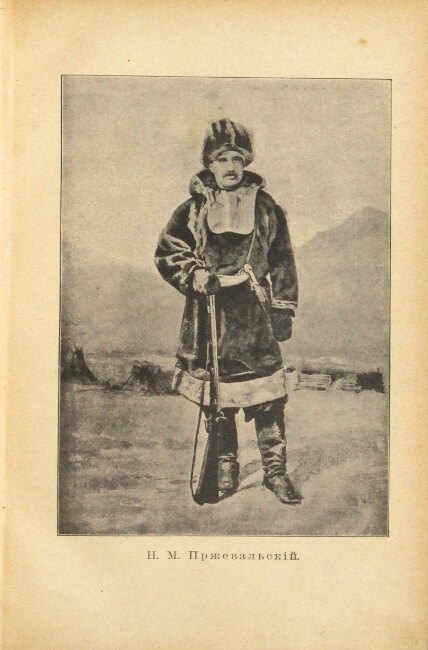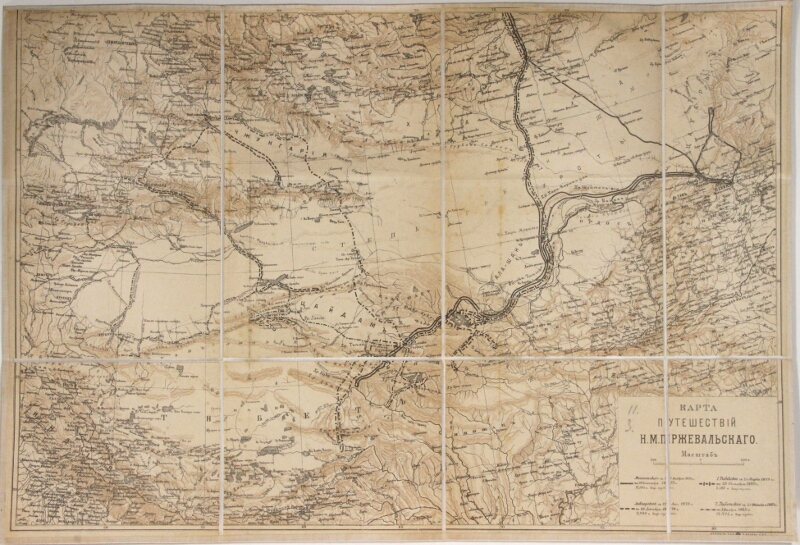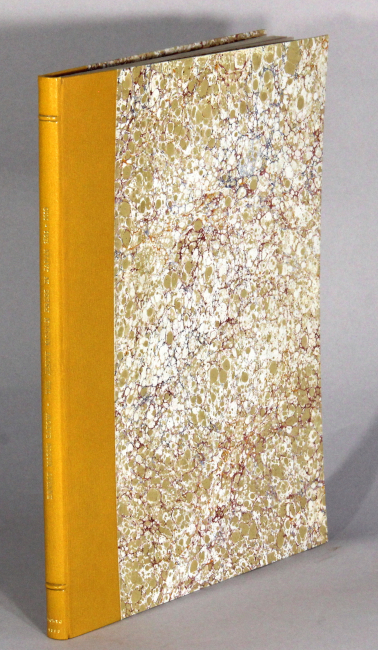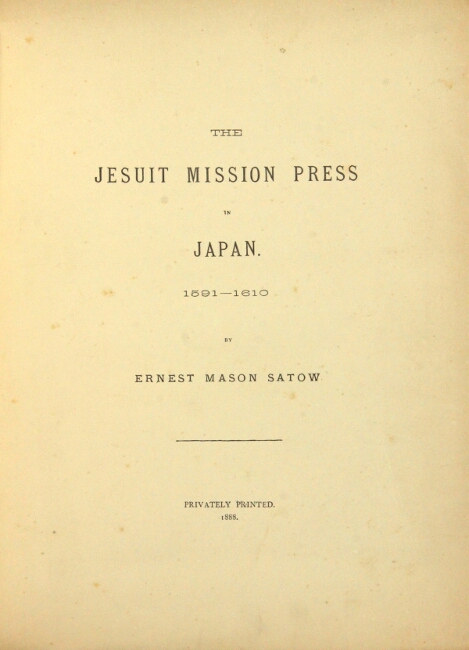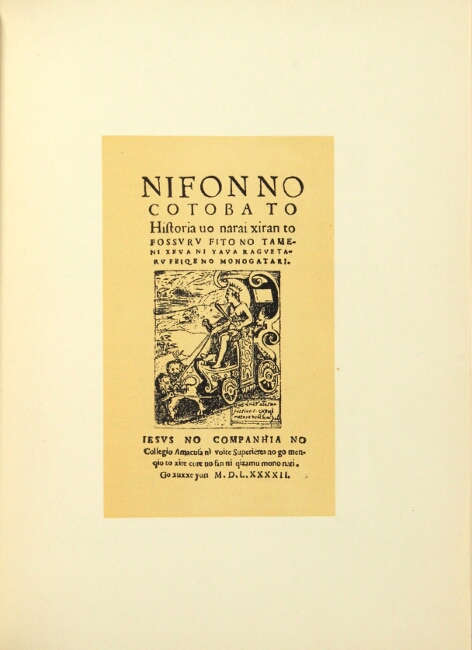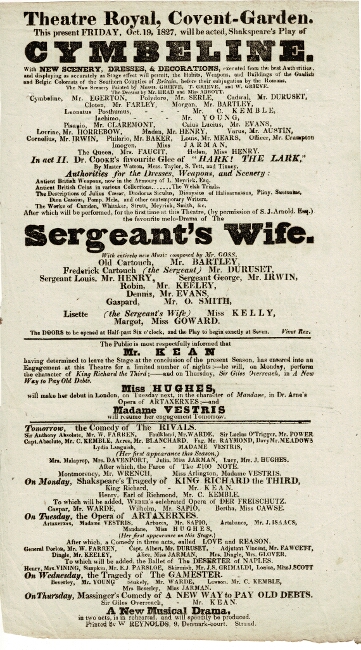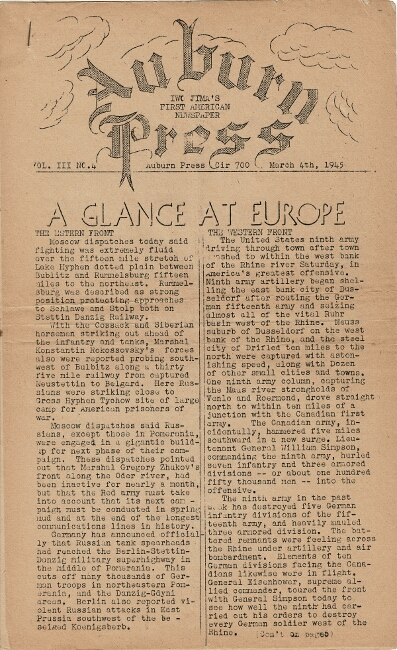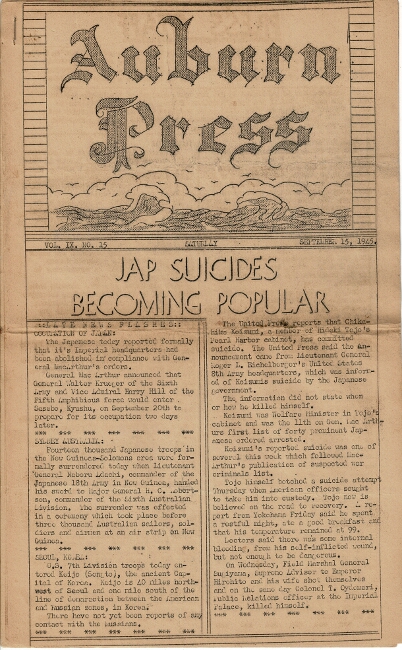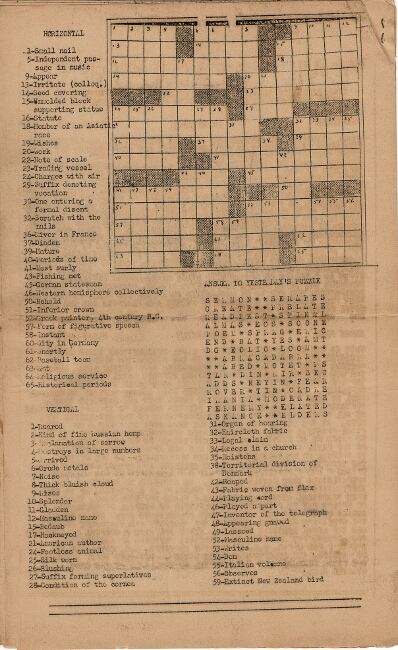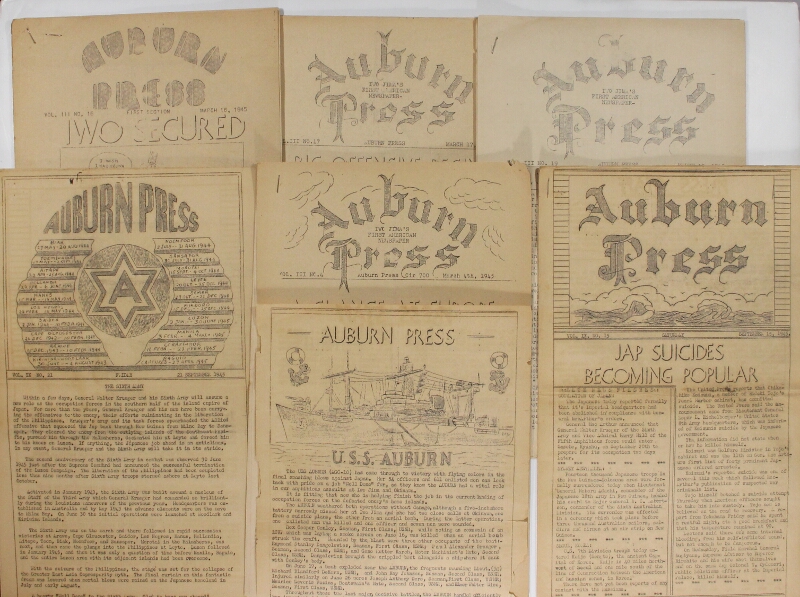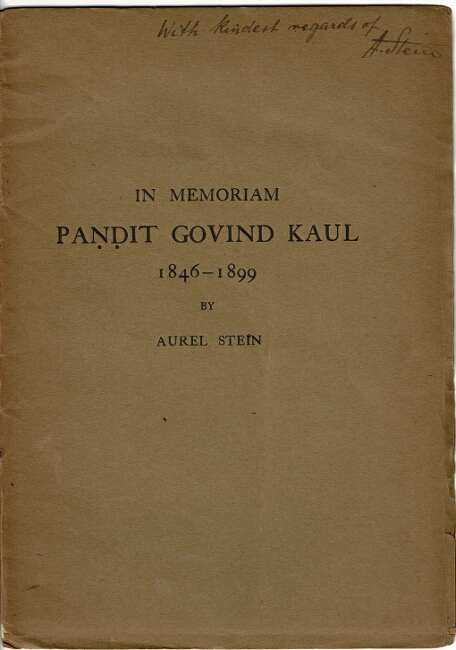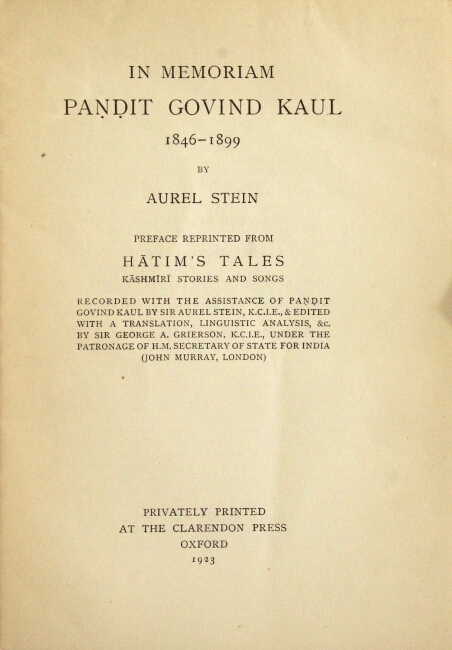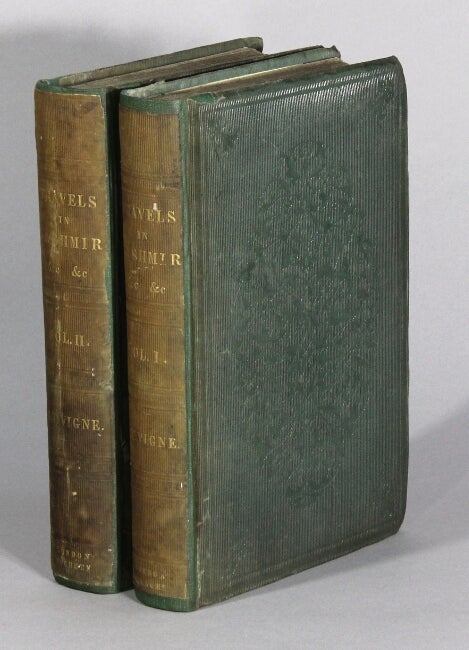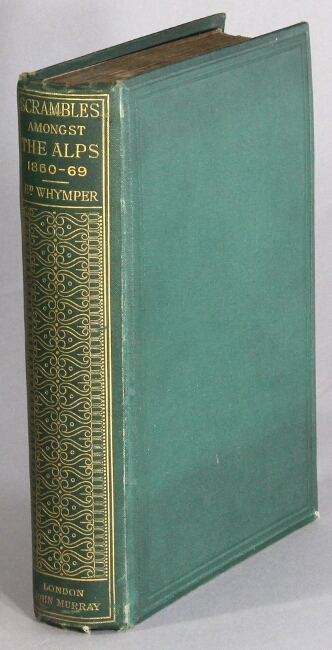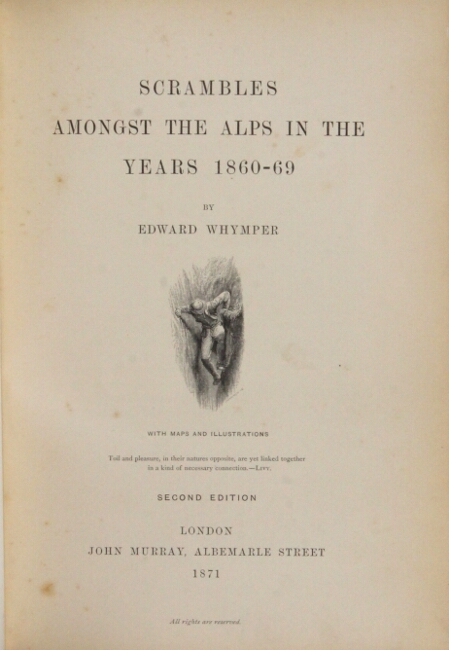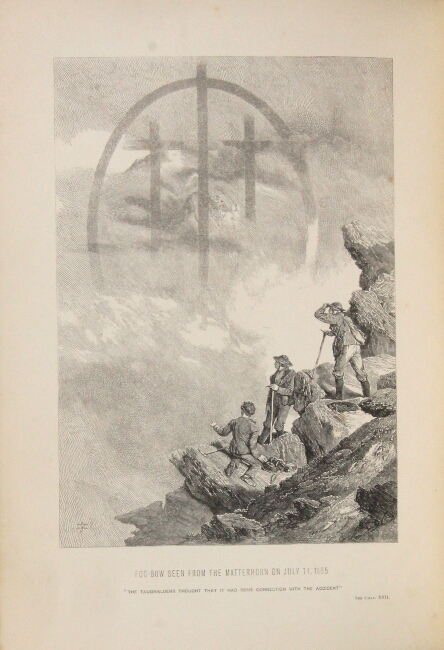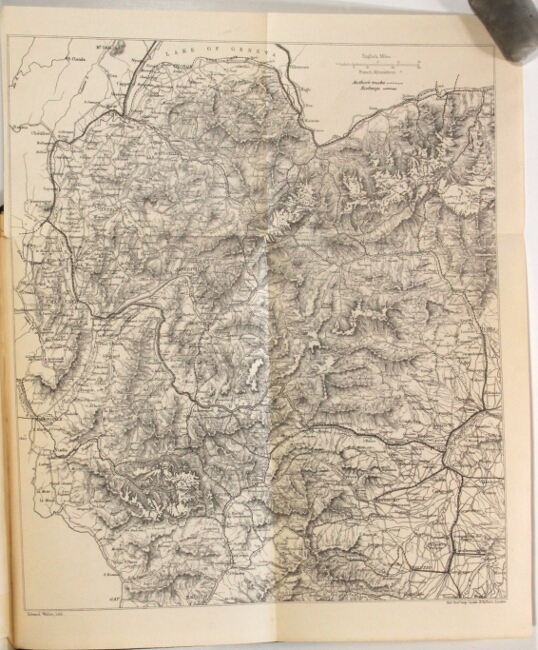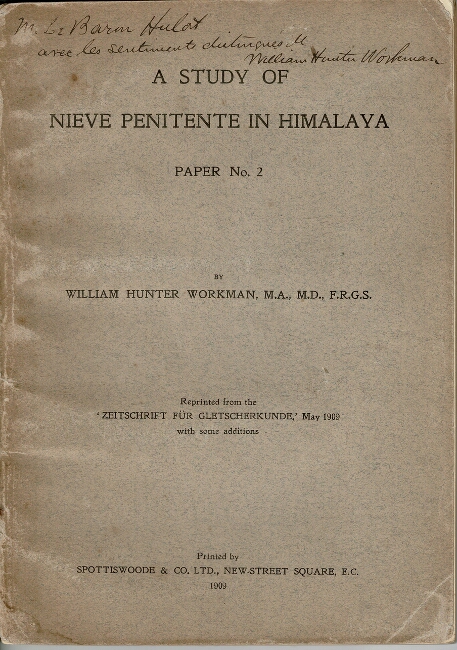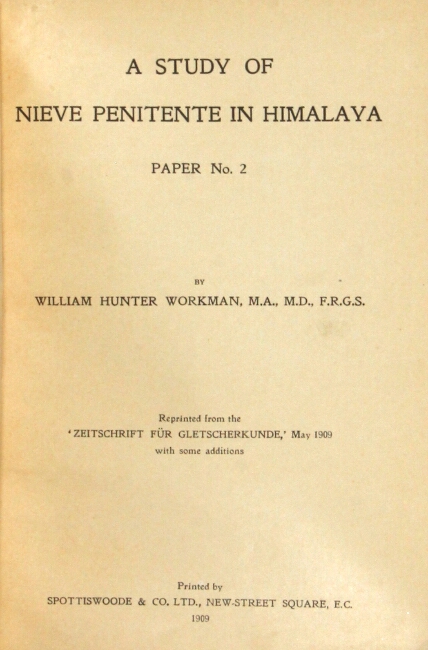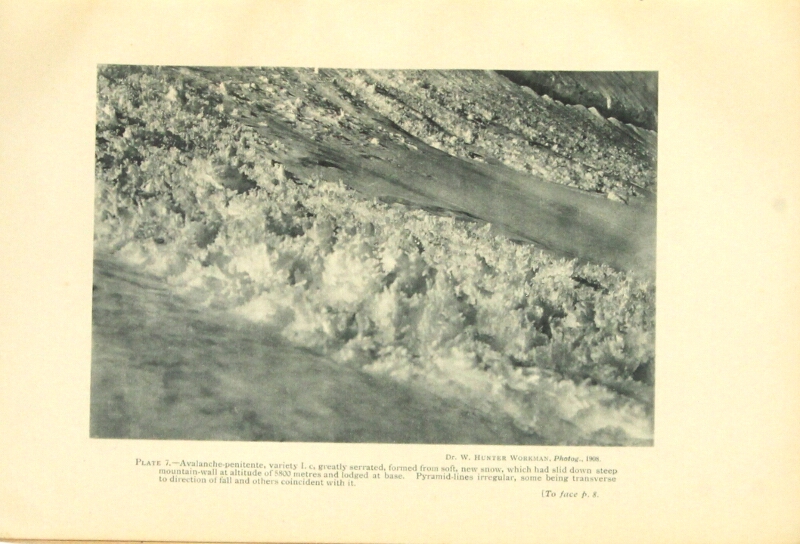Recent Acquisitions
January 7th, 2025
To order call toll-free at (800) 441-0076 or 651-290-0700
or email rulon@rulon.com
or, click on the "add to cart" link to order through our website. Phone calls and emails are generally quicker.
All books are guaranteed genuine as described, and are returnable for any reason during the first week after receipt. If you are returning an item, please let us know so we can make it available to another customer.
Shipping and handling charges are extra and billed at cost.
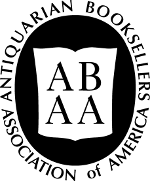
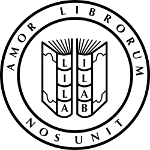
A note on OCLC
As is now the norm, OCLC counts are tentative, at best, as we recognize that searches using different qualifiers will often turn up different results. Searches are now further complicated by the vast numbers of digital, microfilm, and even print-on-demand copies, which have polluted the database considerably, making it difficult, without numerous phone calls or emails, to determine the actual number of tangible copies. Hence, even though the counts herein have been recently checked, most all should be taken as a measure of approximation.

1. Asia. London: Published Jany. 1st 1801 by A. Arrowsmith, no. 24 Rathbone Place., 1801, January 1, 1801.
$1,250
Linen-backed folding map in 4 sections, approx. 50" x 59" overall (each section approx. 25" x 29½"), hand-colored in outline, and edged in blue silk; contained in the original marbled chemise and publisher's box lettered in gilt on spine. Mapseller's label of "Magasin de Cartes Geographiques d' Artaria & Compagnie, rue Kohlmarkt, no. 1219, Vienne" pasted on the verso of one section, and their name also on the spine of the box. Light soiling but on the whole very good.
Includes all but the extremes of Asia, from Turkey and the Ural Mountains in the west to Japan and the Philippines in the east, and including the Arabian Peninsula. Dedicated to Major James Rennell, engraved by George Allen, and with an ornate title cartouche, with military regalia.

2. A practical introduction to the study of Japanese writing (Moji No Shirube) ... Second edition revised. London: Crosby Lockwood & Son. Yokohama, Shanghai, Hongkong, Singapore: Kelly & Walsh, Limited, 1905.
$250
Small folio, pp. viii,547, []3]; title page printed in red and black, Chinese and Japanese characters throughout; tables in the text; light spotting to the covers, prelims spotted, else a very good, sound copy in original cream buckram lettered in black and red.
Basil Hall Chamberlain (1850-1935) was a British academic and Japanologist. He was a professor of the Japanese language at Tokyo Imperial University and one of the foremost British Japanologists active in Japan during the late 19th century. He writes in his Introductory Notes: "Though dealing or rather because dealing with a subject usually considered extremely dry, the compiler of this Introduction has done his best to make it a 'live book'. Japanese is no dead language; its crabbed symbols serve every purpose of daily life to one of the most vivacious of modern nations. The solemn leading article, the skittish feuilleton, the advertiser's puff, the post-card, the cheap telegram, all these have now as familiar a home in Japan as in any Western land. To them the learner must have recourse, be he missionary, merchant, or diplomat, if his study of the language is to bear fruit in practice, though it is also no doubt true that the literature of an earlier growth must not be altogether neglected; for in Japan, as in Europe, the old order of ideas crops out here and there through the new, - forms in fact the basis on which the new stands. The exercises and extracts given in the present volume have been selected in accordance with these views. Utility alone has been considered; nothing has been conceded to antiquarian erudition, except in so far as it may help to light the practical student on his way."

3. A body of correspondence between the author and marine architect Howard 'Chap' Chapelle, and Frederic 'Fritz' Fenger, a fellow yacht designer, author, and sailor. Ipswich, Mass, Cambridge, Maryland and Norwell, Mass.: 1938-1952.
$600
Consisting of 15 letters from Chapelle on 29 pages, all but one typed and single-spaced, all 11" x 8½; and 14 letters in reply from Fenger on 30 typed pages, plus a full-page drawing of a figurehead; some toning to some of the paper, but on the whole these are in very good to fine condition, and chock-a-block full of interesting tidbits regarding many aspects of yacht design and marine architecture, including their respective commissions, rigs and the efficiencies thereof, the aerodynamics of certain types of sails, ballasts, propellers, auxiliaries, marine inspections, boat shows, performance of yachts in different conditions, discussion on articles in Yachting and Rudder magazines (including their own), an extensive critique of the 72-foot Ptarmagan, a Sparkman & Stephens yawl recently launched, nautical terminology, a summary of Chapelle's time in the Navy where he had charge of all the Army boat and vessel building and the rerigging of Perry's flagship on Lake Erie, book publishing, publishers, etc., and mentioning numerous others in the field (both favorably and not-so-favorably) including Lincoln Colcord, Uffa Fox, Herbert Stone, L. Francis Herreshoff, Bill Luders, Clinton Crane, and others. In all, a fascinating correspondence between two premier naval architects of the 20th century.
Mystic Seaport notes that Fenger (1882-1970) was a yacht designer, sailor, and author. His main contributions to yacht design are his use of the dhow-form hull, the wishbone rig, and the main trysail rig. Fenger was an inventive designer, and while some of his innovations never became popular, they did enjoy a following, and the wishbone rig has recently had a revival of interest in commercially produced yachts. Fenger was particularly interested in rigs which would be manageable when sailing short-handed.
Chapelle (1901-1975) was the author of many books on maritime history and naval architecture, and was curator of maritime history at the Smithsonian Institution.

4. Phrases in English and Assamese. Sibsagor, Assam: A. K. Gurney, 1877.
$750
12mo, pp. [8], 98; phrases in English, Assamese, and Romanized transliteration; contemporary marbled boards backed in black cloth, gilt title on spine; boards rubbed, contemporary owner's signature on pastedown, title underlined, very good.
Newberry, Harvard, British Library, Cambridge, Berlin, and BNF in OCLC.

5. Russia's railway advance into central Asia. Notes of a journey from St. Petersburg to Samarkand. London: W. H. Allen & Co., 13 Waterloo Place, and at Calcutta, 1890.
$250
First edition, 8vo, pp. xxii, [2], 439, [1]; errata slip tipped in at p. [1]; frontispiece, 9 plates and 3 folding maps; original pictorial blue cloth stamped in gilt on upper cover and spine; binding slightly skewed, very light rubbing; all else very good and sound.
George Dobson (1854-1938) was one of the first correspondents of The Times of London in Russia, serving in that capacity for better than 25 years.

6. Verhandeling over de sneeuwfiguren, en hoe deze natuurbeschouwing best aan te leggen, ter verheerlyking van Gods magt, wysheid en goedheid ... Tweed uitgave; verrykt met een voorrede van Pieter Boddaert. Utrecht: G. Van den Brink, 1771.
$500
8vo, pp. [28], 178; uncut; 5 folding tables and 29 folding plates; 20th-century blue calf-backed decorative paper-covered boards; a very good, sound, and clean copy.
Engelman (1710-1782) was a Dutch doctor, one of the directors of the Rijnland Water Board, and an amateur meteorologist. In Van der Aa's Biographical Dictionary of the Netherlands it is mentioned that Engelman also wrote a book about ''snow figures'' (snow crystals), which was first published in Haarlem in 1747, and here in a second edition with a lengthy preface by Boddaert.

7. La bataille. Tragedie lyrique. Paris & Tokyo: Dimanche 10 Mai - Mecredi 3 Juin, 1925.
$1,250
Folio manuscript and typescript, 67 leaves in all, consisting of a manuscript title page with notes in red ink, 51 leaves of typescript in red and black type, many leaves with ink corrections, amendments and deletions, 2 leaves with drawings of set designs; 2 leaves of manuscript from Scene II of the opera, 8 leaves of manuscript, each approx. 8" x 6½" and mounted to a larger sheet, detailing scenes and set designs; and, 4 leaves of typescript, with corrections, amendments and deletions which appear to be an outline for the play, the first leaf of which is signed by Claude Farrere. All neatly bound and very presentable in brown morocco-backed marbled boards.
Claude Farrère (pseudonym of Frédéric-Charles Bargone, 1876-1957) was a French Navy officer and writer. Many of his novels are based in exotic locations such as Istanbul, Saigon, or Nagasaki. One of his more successful publications, La Bataille, was published in 1909 and is set in Nagasaki - a romance based upon Japan's modernization and westernization during the Meiji period.
This manuscript/typescript appears to be the working materials of André Gailhard (1885-1966) a French classical music composer who composed several operas including Amaryllis (premiered in Toulouse in 1906); Le Sortilège (Paris, 1913) and La Bataille (Paris, 1931), which was based on Farrère's novel. The first section of typescript appears to be Gailhard's working typescript for his operatic version, with many edits in red and black ink; this is followed by 2 pages of manuscript from scene II of the opera, and 8 leaves detailing scenes and set designs.
"One anecdotal and indirect reference to Claude Farrère is the perfume "Mitsouko" created by the long-lived perfumer Jacques Guerlain, with whom Claude Farrère was a friend. Mitsouko's story is found in Farrère's novel La Bataille (The Battle, 1909)" (Wikipedia).
It is also noted that on 6 May 1932, at the opening of a Paris book fair at the Hôtel Salomon de Rothschild, Farrère was in conversation with French President Paul Doumer when several shots were fired by Paul Gorguloff, a Russian émigré. Doumer was fatally wounded. Farrère wrestled with the assassin until the police arrived.

8. Dichtergrüsse aus dem Osten. Japanische Dichtungen = [White Aster: a romantic epic along with other poems] ... Siebente auflage. Leigzig: C. F. Amelangs Verlag, [and Tokyo: T. Hasagawa], [1945].
$325
First published in 1897, this is the 14th edition; 8vo (approx. 7½" x 6"); pp. [4], 96, [4]; wrappers included in the pagination; printed on crepe paper, double leaves and stab-bound (yamatotoji) with silk thread; illustrated in color throughout; fine copy, preserving the original pictorial publisher's box, thongs broken.
Karl Florenz (1865-1939) was a German Indologist and Japanologist, and a professor in Tokyo and Hamburg. In 1889 he became a lecturer in German language and literature at the Imperial University of Tokyo, and in 1891 full professor of German literature and comparative linguistics. He is considered the founder of German Japanology.

9. Japanische Dichtungen, Weissaster. Ein romantisches Epos, nebst anderen Gedichten = [White Aster: a romantic epic along with other poems] ... Siebente auflage. Leigzig: C. F. Amelangs Verlag. Tokyo: T. Hasagawa, [1940].
$350
First published in 1899, this is the seventh edition; 8vo (approx. 7½" x 6"); pp. [10], 79, [6]; wrappers included in the pagination; printed on crepe paper, double leaves and stab-bound (yamatotoji) with silk thread; illustrated in color throughout; fine copy, preserving the original pictorial publisher's box.
Karl Florenz (1865-1939) was a German Indologist and Japanologist, and a professor in Tokyo and Hamburg. In 1889 he became a lecturer in German language and literature at the Imperial University of Tokyo, and in 1891 full professor of German literature and comparative linguistics. He is considered the founder of German Japanology.

10. Der Sperling mit der geschlitzten Zunge = [The sparrow with the slit]. Tokyo: T. Hasegawa, n.d., [ca. 1929].
$250
6" x 4", pp. [22] double leaves printed on crepe paper, stab-sewn with blue silk ribbon, illustrated throughout in color; fine. Issued in the publisher's Japanische Märchen series.
Hawaii only in OCLC.

11. The Elf: a sequence of the seasons. London: James J. Guthrie at the Old Bourne Press, 1902-04.
$2,500
4 volumes, editions limited to 250 copies each (these, uniformly numbered 242); small 8vo (7½" x 4¼"), written and illustrated by James Guthrie and printed in blue, red, green, and black, with decorative endpapers, pictorial title pages, 27 engravings and numerous engraved illustrations in the text; original pictorial holland-backed boards; original tissue guards laid in throughout; a near-perfect set, fine, clean, and sound. In a later blue cloth clamshell box (spine lightly sunned) with maroon morocco label on spine.
Coinciding with the earliest years of Guthrie's famous Pear Tree Press, and printed by him "under the supervision of W. Herbert Broome." Broome founded the Old Bourne Press and designed the Myrtle type, type which Guthrie continued to use at the Pear Tree Press.
Accompanied by: [Prospectus.] The Pear Tree Press. Announcement of books illustrated by James J. Guthrie and published by the "Pear Tree Press" at South Harting, Petersfield, Hampshire. South Harting: The Pear Tree Press, n.d., [1903?].
8vo bifolium, pp. [4]; pages 2-3 announcing six titles, among them the press's first book, E. A. Poe's Some Poems ... Edited with an Introduction by J. C. Wright, (1901); Guthrie's An Album of Drawings (apparently not published); The Elf, (1902); An Alphabet (apparently not published); and The Floweret (1902). Page 4 consists of an order form. Apparently, the first prospectus issued by the press. Only the University of London in OCLC.

12. Shopping-dialogues in Dutch, English and Japanese. [Parallel title in Dutch:] Winkelgesprekken in het Hollandsch, Engelsch en Japansch. London: Trübner & Co. The Hague: Martinus Nijhoff, 1861.
$9,250
Oblong 8vo, pp. xiii, [1], 44; text largely in triple column; the final leaf is a list of works "Illustrative of the Japanese language." Contemporary if not original crimson velvet stamped in blind and gilt on both covers, moiré-patterned endpapers; extremities a little worn with velvet rubbed to the underlying boards, hinges neatly refurbished with Japanese paper, but on the whole, this is a very good, sound, and clean copy.
An uncommon phrase book designed for the use of foreign traders and travelers in Japan, and sailors on Dutch and American ships: "...this pocket-volume, which is now published under the title of Shopping-Dialogues has acquired value not only for those who apply more particularly to the study of the Japanese language, but also for the Merchant-Captain who lands at Nagasaki or at Kanagawa, the trader, and the traveller; and why not for the sailor? who occasionally launches about the streets of those places not knowing what to do with himself" (introductory note).
The book has an interesting history. It was based on A New Familiar Phrases of the English and Japanese Languages (in) General Use for the Merchant for Both Countries (Nagasaki, 1859), by Motoki Shozo. "Motoki is widely regarded as one of the founders of the Japanese printing industry. In 1848 he had acquired a Dutch press with moveable roman type, and subsequently cast a set of katakana type in order to print [a Dutch-Japanese dictionary] that appeared in 1851-52. A New Familiar Phrases is a publishing hybrid in that the roman and katakana letters were printed from lead fonts, while the kanji characters in the introduction derive from woodblock."
In his introduction, Motoki explains that the "prime purpose of the book is to assist with commercial negotiation rather than advanced language study, and he modestly suggests that some of the transcriptions might even make one laugh." And the same may be said of Hoffman's book. As Hoffman would later explain in his introduction to his Japanese Grammar (1867), Motoki's book was "the first specimen of genuine conversational language to reach Europe." Hoffman's Shopping-Dialogues is likely the second such specimen, and the first by a European.
Hoffman's text, as he conceives it, reads something like a series of theatrical sketches. Each sketch starts with a kind of overture where two parties exchange greetings and get to know one another: "May I offer you a glass of wine? / No. I thank you. / Why don't you drink? / Don't stand upon ceremony. / May I then offer you a cup of tea? / If you please."
At this point, the conversation between the two parties turns to business. The (trilingual) conversations include scenarios where one wants to purchase a gold-lacquered desk; in another, a merchant has a supply of yellow wax that he wants to sell and offers to bleach it for the customer; in a third, a customer is looking to buy some cloth; and in a fourth, a merchant offers a plethora of products and produce from what one assumes to be a general store, such as mushrooms, mussels, and raw silk, but the customer is interested only in sugar and medicine.
In each of these cases there is an instructive subtext, so that the user of the Shopping-Dialogues learns something about methods of bargaining, the value of money, the limits of a merchant's time (and patience), delivery times, systems of weight and measurement, and the Japanese calendar.
"What is the price of this? / Twenty-five taels. / Can you sell it for eighteen taels? / No, I can not. / I will let you have it for twenty-three taels. / I can't take it at that price. / Make an offer then. / I will take it at nineteen taels. / I can't sell it for that price. / I can't sell it under twenty taels. / Is that the lowest price? / Yes. / Then I will buy it."
The binding on this copy is something of an enigma - crimson velvet, extravagant moiré endpapers, an elaborate gilt-stamped lozenge on the upper cover and a gilt-stamped title in Japanese on the lower. Not exactly a proper binding for a pocket or a sailor, and all too luxurious for a phrase-book that would be frequently consulted. Might this have been a publisher's copy, or a copy intended for presentation?
OCLC notes a dozen or so copies overseas, but in the U.S. only Penn and Yale. There is a detailed article about this interesting book by John Bray published in the Transactions of the Asiatic Society of Japan, Fifth Series, volume 5, 2013, pp. 230-39 from which I have borrowed.

13. Biographical notice of Com. Jesse D. Elliott; containing a review of the controversy between him and the late Commodore Perry; and a history of the figure-head of the U.S. Frigate Constitution ... By a citizen of New York. Philadelphia: printed for the author, 1835.
$650
First edition, 8vo, pp. 480; temoine at pp. 7-8; 6 pages in the appendix showing lines of battle; appendix with contributions by O. H. Perry, Usher Parsons, Dulany Forrest, Edward Livingston, B. W. Crowninshield, and others; original yellow printed paper-covered boards and spine; bookplate of Dickinson College, the gift of Prof. [Spencer Fullerton] Baird, Secretary of the Smithsonian Institution, and the first U.S. Commissioner of Fisheries, in 1846.
The book is usually found in calf bindings. It is unusual in these attractive printed boards.
A pro-Elliott publication in the controversy between him and Perry. Elliott served as second-in-command under Perry during the Battle of Lake Erie. His conduct during that battle was a source of controversy characterized by the DAB as "without parallel in American naval history."
During Elliott's command of the Boston Navy Yard, a prankster sawed off the figurehead of Andrew Jackson on the Constitution. It was only discovered in 1998, in Paris, with the descendants of Capt. Samuel Dewey, the original decapitator. (See ussconsitutionmuseum[.]org for the complicated story.)
Howes J-68; American Imprints 32375.

14. The wooings of Jezebel Pettyfer, being the personal history of Jehu Sennacherib Dyle, commonly called Masheen Dyle; together with an account of certain things that chanced in the House of the Sorcerer, here set down. London: Grant Richards, 1898.
$3,500
First edition, first issue, 8vo, pp. x, [2], 403, [1]; original pictorial tan cloth with a cover illustration by the author; front hinge cracked, rear hinge starting; all else very good, sound, and clean.
This is MacFall's first book. Laid in is a 2-page autograph letter (approx. 7" x 4¾") on integral leaves, signed by him and discussing various titles, e.g., The Masterfolk (1903); The Splendid Wayfaring (1926); and, Songs of the Immortals (1927).
Accompanied by the original pencil drawing by MacFall used as the cover illustration (approx. 7" x 4½", matted. The drawing is in a rustic frame, and shows considerably more detail than the cover illustration on the book, and is signed in the lower right corner, and signed again on the mat along with a presentation inscription to Vincent Starrett: "To my friend Vincent Starrett / from Haldane MacFall."
The book is reasonably scarce as a fire in the publisher's warehouse destroyed almost all of the first edition copies. Banned in the USA for 25 years for its risqué content and topless cover illustration, a second edition didn't appear until 1913, due to the hundreds of requests received by the publisher from all over the world. And then the "racy" cover illustration appeared as the frontispiece, not on the cover. A 1926 reprint in the US by Alfred A. Knopf, didn't even reproduce the frontispiece! By then, the intervening years, spanning a World War, didn't help rescue the book from its rather undeserved lack of readers. In 1923 a wonderful book of literary essays by Vincent Starrett, entitled "Buried Caesars", Chicago: Covici-McGee Co., carried a chapter on MacFall and this book, and constitutes about the best introduction to it that can be written. MacFall, apparently, was ever after grateful to Starrett for his efforts, and prior to his death sent the original pencil drawing across the pond to Starrett.
The drawing then passed to the antiquarian bookman David A. Randall on Starrett's death, and later to a private collector. Subsequently, the drawing passed to David Randall's son, Ron, who in turn sold it to yet another private collector. That collector, now in his 80s, has consigned the drawing, the letter, and the book to Rulon-Miller Books, where it is here offered again. Vincent Starrett collectors will find Jezebel reproduced in his 1929 "Penny Wise and Book Foolish" opposite page 60.
Wolff 4329.

15. [Malay - French Grammar & Dictionary.] Ilmu sarfu dan nahu, deri Bhasa Jawi, atau Malayu. Cours théorique et pratique de la langue commerciale de l'archipel d'Asie dite malaise telle qu'elle se parle a Sumatra, Singapour, Bornéo, les Célèbes, les côtes de Chine, du Cambodge (Saīgon) de Siam, de Java, etc. Contenant une exposition raisonnée des principes de grammaire, les règles générales de prononciation, un vocabulaire des termes de marine, les poids, mesures, monnaies, etc. Bordeaux: Féret & fils ... Paris: J.-B. Dumoulin ... Bruxelles: J. Rozez, 1872.
$500
First edition, 8vo, pp. xxix, [1], 94, [2]; original printed wrappers bound in; back wrapper with small piece torn away at top corner (no loss);
bound with: Richard, Léonce. Kitāb pada meniatā-kan bhāsa jāwi, atau malayū. Dictionnaire de la langue commerciale de l'archipel d'Asie (dite malaise) telle qu'elle se parle à Sumatra, Singapour, Bornéo, les Célèbes, les côtes de Chine, du Cambodge (Saïgon), de Siam, de Java, etc. Paris, [as above], 1873. First edition, 2 volumes in 1, 8vo, pp. [6], 124; 153, [1]; original printed wrappers bound in.
Malay-French grammar and dictionary, the second with both Malais-Français and Français-Malais sections, together in a fine French binding of full green morocco, gilt-lettered spine. Wrappers for both volumes with a publisher's cancel strip reading: "Paris: Maisonneuve & Ch. Leclerc, Librairie Orientale & Americaine, 25, Quai Voltaire."
Not in Zaunmuller.

16. [Przhevalsky, Nikolay Mikhaylovich.] Путешествія Н.М. Пржевальскаго. Puteshestvīi︠a︡ N.M. Przhevalʹskago = [Puteshestvīi︠a︡ N. M. Przhevalʹskago] = [World traveler. The travels of N. M. Przhevalsky. Compiled from original sources by A. V. Zelenin]. St. Petersburg: P. P. Soĭkin, 1899-1900.
$1,500
First edition, 2 volumes, 8vo, pp. 464; 495, [1]; in Cyrillic characters throughout; 2 folding maps in back cover pockets plus one other map, 178 wood-engraved and photographic illustrations (a number full-page); 20th-century full maroon cloth gilt-stamped on upper covers and spines; text a bit toned, else near fine throughout. With the bookplates of Angus I. Ward (1893-1969), the American sinologist and diplomat who famously stood up to Mao Zedong in 1948 and was deported in 1949.
The life and summary of four expeditions into Central Asia by Nikolay Mikhaylovich Przhevalsky (or Prjevalsky, 1839-1888). Przhevalsky "was a renowned explorer of Central and East Asia. Although he never reached his ultimate goal, the city of Lhasa in Tibet, he still traveled through regions then unknown to Westerners, such as northern Tibet (modern Tibet Autonomous Region), Amdo (now Qinghai) and Dzungaria (now northern Xinjiang). He contributed substantially to European knowledge of Central Asian geography" (Wikipedia), yet he was deeply prejudiced against the Chinese people and Chinese civilization. Also noted is the urban legend that Joseph Stalin was his illegitimate son.

17. The Jesuit Mission Press in Japan 1591-1610. [Place of publication not identified]: privately printed, 1888.
$750
4to, pp. [8], 54; errata slip tipped in after p. [8]; original card wrappers bound in; 13 plates of facsimiles; 3 erudite annotations in ink on locations of other copies; all else fine in 20th-century citron niger morocco-backed marbled boards, gilt title on spine.
Sir Ernest Mason Satow (1843-1929) was a British diplomat, scholar and Japanologist. He was a key figure in late 19th-century Anglo-Japanese relations, and an important collector of Japanese books and manuscripts.

18. [Shakespeare, William.] Theatre-Royal, Covent Garden. This present Friday, Oct. 19, 1827, will be acted Shakespeare's play of Cymbeline. With new scenery, dresses & decorations ... Cymbeline, Mr. Egerton ... Leonatus Posthumous Mr. C. Kemble ... After which will be performed ... The Sergeant's Wife.... [London]: printed by W. Reynolds, 9, Denmark-court, Strand, 1827.
$275
Broadside, approx. 13½" x 8", light toning, else near fine.
Charles Kemble (1775-1854) was one of the famous family of actors which included John Phillip Kemble, Stephen Kemble, and Sarah Kemble Siddons, all of whom were known for their Shakespearian roles. Charles Kemble's eldest son, John Mitchell Kemble, a protege of Jacob Grimm, was the foremost Anglo-Saxon scholar in England at the time, and made the first English translation of Beowulf, published by Pickering 1833-37.
Noted as an authority on the ancient British weaponry for Cymbeline is L. Merrick. Also, "The public is most respectfully informed that Mr. [Edmund] Kean having determined to leave the stage at the conclusion of the present season, has entered into an engagement at this theatre for a limited number of nights: he will on Monday, perform the character of King Richard the Third..."
Not found in OCLC.

19. [Shipboard Printing.] Auburn Press. Iwo Jima's first American newspaper. Shipboard, and at sea: printed aboard the USS Auburn, 1945.
$850
Published by and for the personnel of the USS Auburn under the supervision of the ship's Communications Office; circulation is stated at 700 - the full complement of Auburn's crew amounted to 686.
Wikipedia tells us that the USS Auburn (AGC-10) was a Mount McKinley-class amphibious force command ship, named for the hill Mount Auburn just northwest of Cambridge, Massachusetts. She was designed as an amphibious force flagship, a floating command post with advanced communications equipment and extensive combat information spaces to be used by the amphibious forces commander and landing force commander during large-scale operations.
A group of six issues plus a one-sheet post-war review (undated) detailing naval action, casualties, and injured personnel on board the Auburn during her time in service. Issues are 8-10 pages each printed by mimeograph on 13" x 8" staple-bound stock; most have some edge wear and light chipping with previous folds; all are rather toned, but the condition otherwise is very good.
These issues were published on board the USS Auburn near the end of World War II as the ship was only launched in October 1943, commissioned in July 1944, and didn't arrive at Pearl Harbor until the end of September, 1944. By early February 1945, she reached Tinian in the Marianas where she began final rehearsals for the assault on Iwo Jima. During the operation, the Auburn coordinated and directed the movements of several hundred ships attached to Amphibious Group 2. The by-line for the March 4th issue states, "Iwo Jima's First American Newspaper." The March 16 issue states: "This one-time enemy bastion officially became American Territory on the 14th of March with the formal unfurling of the stars and stripes and the delivery of a proclamation issues by fleet admiral Chester W. Nimitz."
This collection contains issues from March 4, 16, 17 and 19, plus September 15 and 21. The Auburn Press included war news from different theatres (Burma, China, Philippines, Okinawa, Japan, etc.), editorials from various state-side newspapers (Herald Tribune, Washington Post, Baltimore Sun), sports news (golf, baseball, boxing), ship-board news, and occasional poetry. Also included are feature articles such as "Jap Suicides becoming Popular," "U.S. Enters Coblenz," "Big Offensive Begins," and "Iwo Secured." The paper received Camp Newspaper Service material and was a member of SEA (Ship's Editorial Association). Issues usually also contained a humorous item or comic panel, and each issue also contains a full-page crossword puzzle on the verso of the final sheet.
OCLC locates a holding at the Wisconsin Veterans Museum Library, but a search at that library's website turns up no records.

20. In memoriam Pandit Govind Kaul 1846-1899. Preface reprinted from Hatim's Tales Kashmiri Stories and Songs recorded with the assistance of Pandit Govind Kaul by Sir Aurel Stein, K.C.I.E. & edited with a translation, linguistic analysis, &c. by Sir George A. Grierson, K.C.I.E., under the patronage of H.M. Secretary of State for India (John Murray, London). Oxford: privately printed at the Clarendon Press, 1923.
$850
First edition, 8vo, pp. 19, [1]; original brown printed wrappers; some minor creasing, slight separation at the top of the spine; all else very good. Inscribed at the top of the from wrapper: "With kindest regards of / A. Stein."
Pandit Govind Kaul, a respected scholar of Persian and Sanskrit, was born in Srinagar, and came into contact with Aurel Stein through George Buhler, "that doyen of European Indologists ... It was Buhler's commendatory reference that attracted Stein's attention towards G.K. and he solicited his assistance in translating Kalhan's Rajatarangini - a job that G.K. along with Pandit Sahaz Bhatt did with utmost competence from 1888 to 1896, and to Stein's great satisfaction.
"G.K. went into another collaboration with Stein and fellow scholar Sahaz Bhatt when they classified and catalogued more than six thousand Sanskrit manuscripts for Maharaja Ranbir Singh's library at Raghunath Temple, Jammu. Yet another contribution G.K. made was to compile Kashmiri folk tales with Stein, which the latter formally edited with George Grierson and published in 1917 as " Hatim's Tales." The tales, supposedly told by one Hatim Tilawony, were interpreted by Govind Kaul who also rendered assistance to Grierson in the compilation of his Kashmiri dictionary, but did not live to see the work completed. Grierson went on to record later that Govind Kaul's assistance to him was "one of the many debts he ever owed to Stein.
"On Govind Kaul's death in June 1899, a shocked Stein lamented that Govind Kaul, ''like another Kalhana departed as my best Indian friend beyond all hope of reunion in this Janma'. Paying fulsome tributes to him, Stein wrote: 'Whenever Govind Kaul was by my side, whether in the dusty exile of Lahore or alpine coolness of Mohand Marg in Kashmir, I was in continuity with the past as the historical student of India. His personality embodied all that change of ages indicated and showed as the mind and psyche of India'."
Nine in OCLC: only Harvard, LC and Wisconsin in the US. See Unmesh, The Monthly Newsletter of the Kashmir Institute, volume I, no. 2, October 1997.

21. Travels in Kashmir, Ladak, Iskardo, the countries adjoining the mountain-course of the Indus, and the Himalaya, north of the Panjab. London: Henry Colburn, 1842.
$1,250
First edition, 2 volumes, 8vo, pp. xlviii, 406; x, 462, [2], 16 (Colburn catalog dated Jan. 1841), [8] Colburn ads (dated May 1841); folding map in rear cover pocket, 2 lithograph frontispieces, engraved map, 7 lithograph plates and 5 wood engravings in the text; original green cloth neatly rebacked with original gilt-lettered spines laid down; spines darkened, but the text and plates are clean and the binding is sound. The very large folding map has a few short splits at the folds, but no major issues.
The author travelled in and wrote on the United States and Canada, Kashmir and Afghanistan. "Vigne was neither a professional author nor a commissioned tourist. He travelled for amusement, saw much, and was assisted in his observations by the possession of some knowledge of science" (DNB).
"Narrative of the author's travels in Kashmir, Ladakh, and Balutistan during the years of 1835 to 1838. In 1835 he reached the terminal of Chogo Lungma glacier, and in 1837 he explored the Shyok River, and in 1838 the Saltoro Valley and the Bilafond glacier from Khapalu in search of Saltoro Pass" (Yakushi).
Yakushi V90.

22. Scrambles amongst the Alps in the years 1860-69 ... Second edition. London: John Murray, 1871.
$950
8vo, pp. xviii, [2], 432; 5 folding maps at the back (1 in color), 23 plates (1 folding), and 92 illustrations in the the text; original green cloth, gilt-stamped spine; lightly rubbed, but a very good, sound, and clean copy. Bookplate of the Rev. Richard Townsend, Trinity College, Dublin.
"Before Scrambles Amongst the Alps was published everyone - including my publisher - told me that there were already too many books on the Alps, and that mine was not wanted. The first edition consisted of 1575 copies, and the book was published at one guinea. Within a week of the day of publication, the whole edition was sold - it has been reprinted in America, and translated into French and German and the combined circulation in the four countries amounts to I believe over 30,000 copies" (from a photocopied letter of Whymper's explaining the relative rarity of the first edition - not included here).
This second edition was printed the same year as the first and collates the same. Considered by many to be "the most famous mountaineering book in the world" (Neate). A tragic adventure. Four mountaineers fell to their death during the ascent of the Matterhorn.
Neate 897.

23. A study of nieve penitente in Himalaya. Paper no. 2 ... Reprinted from the 'Zeitschrift für Gletscherkunde,' May 1909, with some additions. [London]: Spottiswoode & Co., Ltd., 1909.
$175
8vo, pp. 27, [1]; 21 photographic plates; original printed wrappers with some cracking at the bottom on the spine, but generally a very good copy.
Inscribed at the top of the front wrapper: "M. Le Baron Hulot avec les sentiments distingues de William Hunter Workman. Etienne Gabriel Joseph Hulot (1857-1918) was a French geographer, group secretary at the Geographical Society in Paris, and was involved in scientific experimentation and its applications, in 1909 alongside Henri Farjas in the context of the founding of a radium bank."
Wikipedia informs us that the nieve penitente are snow or ice formations that look like penitents or nazarenos. They are made up of thin, tall blades of snow or ice that point towards the sun and are spaced closely together. The name comes from the resemblance of a field of penitentes to a crowd of people kneeling in penance.
Nine in OCLC, only Colorado, Wisconsin, and the Sierra Club in the US.

